PORTFOLIO - NGOs AND HUMANITARIAN ORGANIzATIONS
Since I moved to Asia in 2012, I have collaborated with several NGOs and international humanitarian organizations.
In 2013, I was selected to be part of a team of 3 photographers to work for all the United Nation’s agencies in Cambodia.
At the end of 2014, I started a collaboration with USAID in Washington D.C. to produce a series of multimedia projects documenting intimate stories of people for their portal USAID STORIES. For this project, I produced stories in Nepal, Honduras, El Salvador, Colombia, Egypt, Jordan, Cambodia, Jamaica, Dominican Republic, Uzbekistan, Georgia, India, Ethiopia, and Peru. I profiled the challenges and dangers faced by Colombia’s LGBT community alongside a trans activist in Cartagena, while in Jordan, I captured a story of friendship and new beginnings in the shadow of the Syrian civil war. In Honduras, El Salvador and Jamaica, I highlighted the many facets of USAID’s work in citizen security and prevention of gang violence.
In 2014, I also started a collaboration with WWF, shooting a series of multimedia projects with some of the members of Ruom Collective. We were assigned projects in Vietnam and Cambodia to cover the effects of development along the Mekong River. In India, we documented the efforts to preserve the Ganges River and WWF projects to create a more sustainable way of cultivating cotton and in Thailand we documented the challenges caused by the cohabitation between humans and elephants and the innovative strategies introduced into forest management practices to solve it.
in 2019 I had the chance to work for Michelle Obama’s Girls Opportunity Alliance highlighting their supports for projects in Vietnam and Peru.
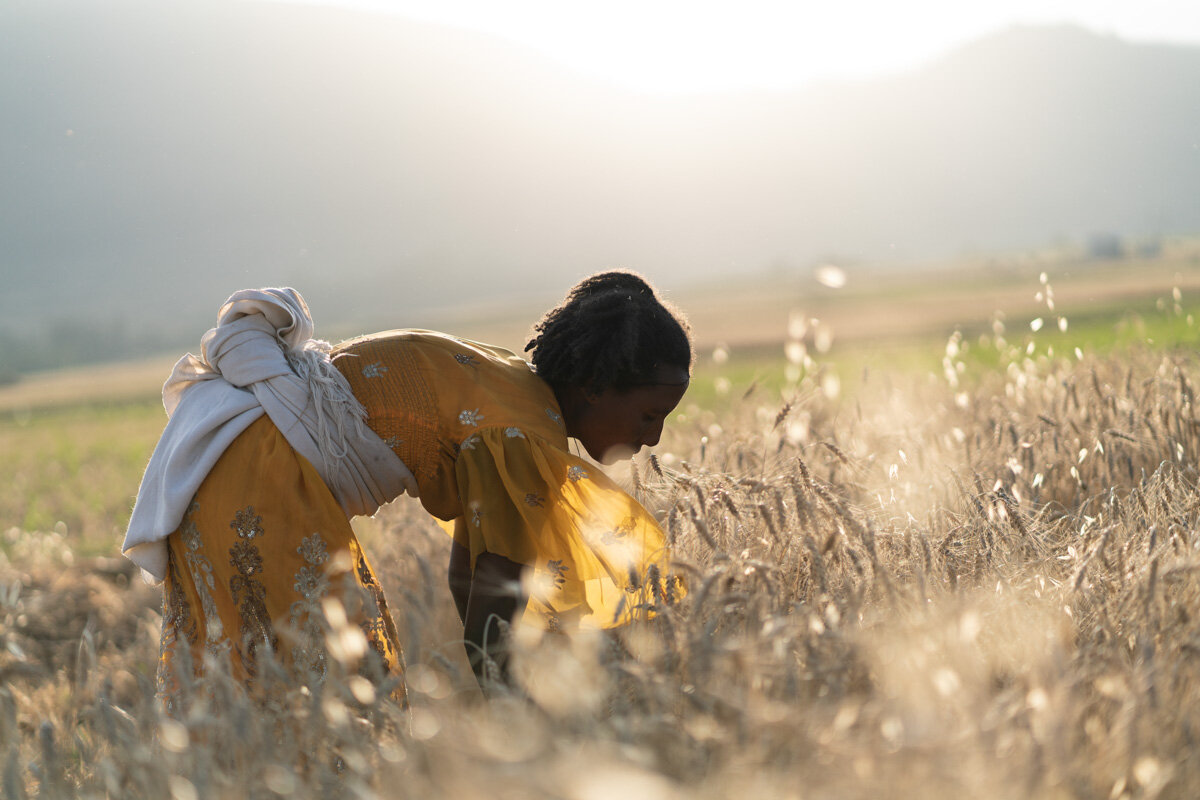
USAID Ethiopia - Aberu
December 4, 2018 -- Farmer Aberu Mamo, 33, works with her husband and laborers to harvest wheat from a field they rent in South Tigray, Ethiopia. The family of five had been reliant on the Ethiopian Government’s social safety net program, but they wanted to be independent. With help from USAID, they learned how to save money, diversify their income sources, and take out loans to invest in business. Within a year, they self-graduated from the government program, confident they could weather setbacks caused by drought and crop loss on their own. © Thomas Cristofoletti / Ruom for USAID

02 - Lean Socheatra
July 23, 2020 - Kampong Speu (Cambodia). Len Socheatra plays with his cousins outside the family house. Socheata suffers of intellectual disabilities and before COVID-19 was attending a special class at Kampong Speu’s school so he could integrate into government school and socialize with his peers of all abilities. © Thomas Cristofoletti / UNICEF

RTI Cambodia
August 24, 2020 - Prey Kouy Village, Kampong Speu (Cambodia). Bun Soeun Pisey (22) collects vegetables together with her little daughter Meng Lang (22 months old) in the garden of their house located in the outskirts of Kampong Thom. © Thomas Cristofoletti / Ruom for RTI
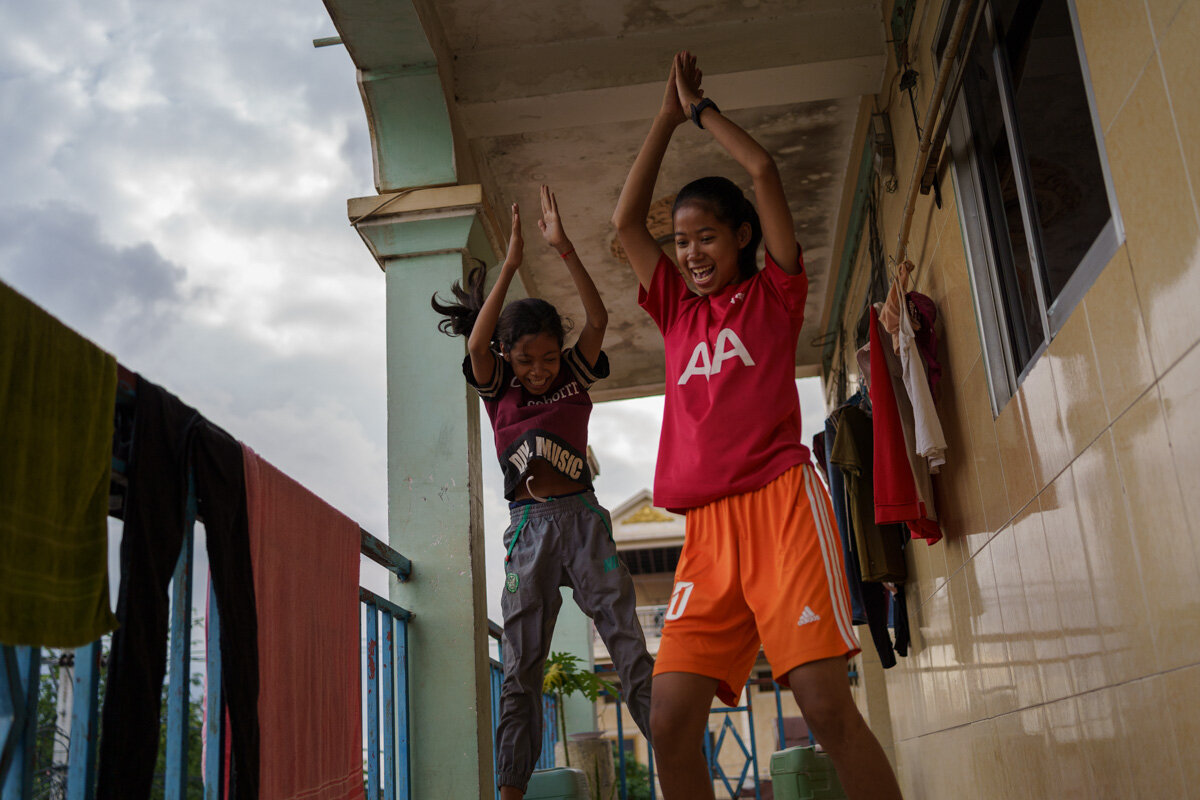
04 - Nha Nha
July 24, 2020 - Phnom Penh (Cambodia). Nha Nha uses a training exercise video made by ISF together with her smaller sister Sopheap. The school has been using streaming apps to provide essential teacher-student interaction and creating a series of physical training exercises. Using Google classroom, Telegram and Facebook Groups, as well as Messenger, allow students to continue studying from the safety of home. To ensure students have suitable equipment to learn online, ISF loans tablet computers to those in need. Subsidies are also available for students who struggle to afford internet service. © Thomas Cristofoletti / UNICEF
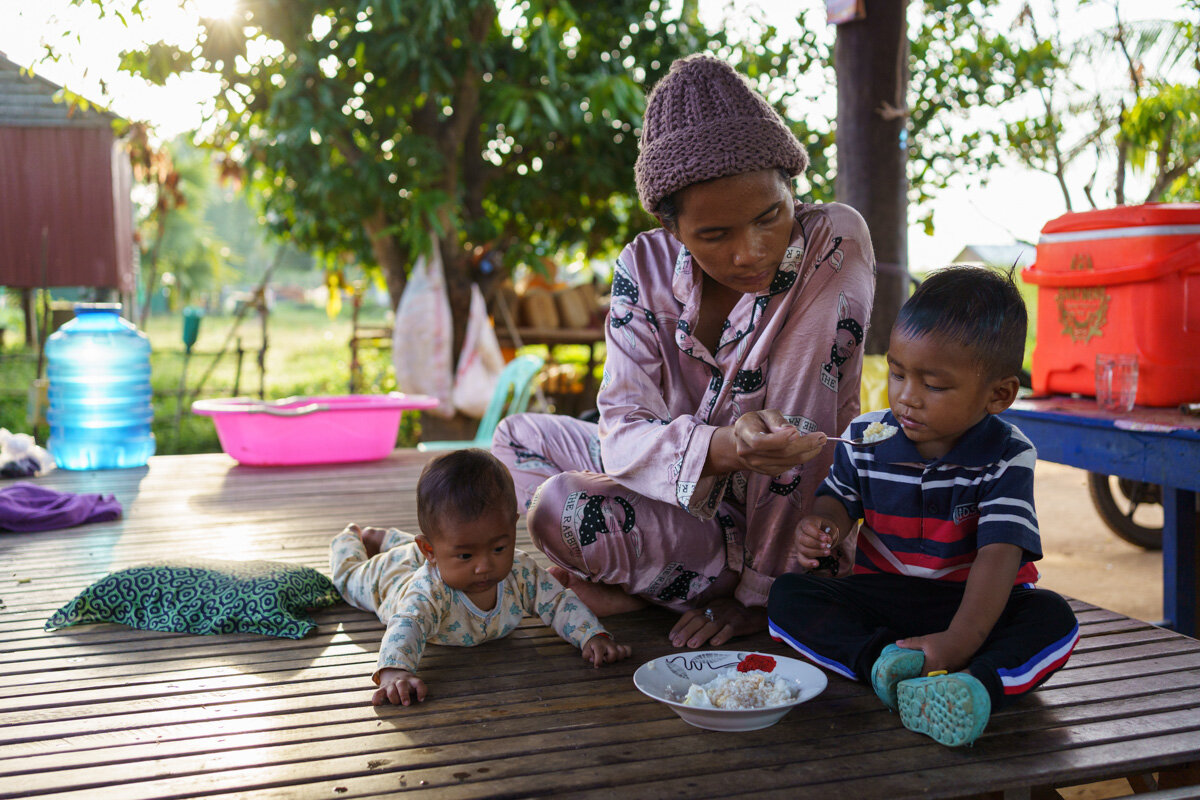
RTI Cambodia
August 25, 2020 - Prey Kouy Village, Kampong Speu (Cambodia). Dien Sokhnin (25) feeds her son Rattana Likong (22 month) with “bor bor” porridge. © Thomas Cristofoletti / Ruom for RTI
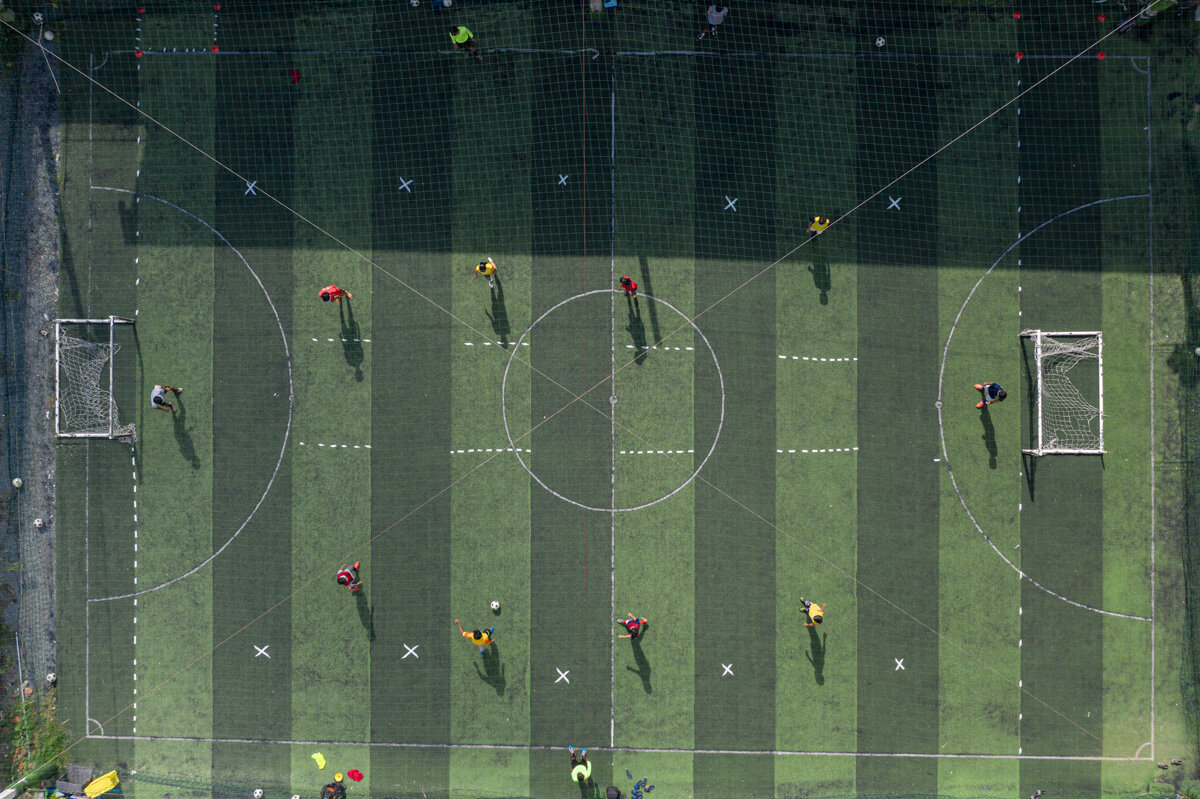
04 - Nha Nha
July 25, 2020 - Phnom Penh (Cambodia). Nha Nha plays a match of social distancing football together with some of her classmates from ISF. Social distancing football was recently introduced by ISF to allow its students to play safely during the COVID pandemic and requires all players on the pitch to wear a face mask, keep a 2m distance from each other, and control the ball for only five seconds at a time. © Thomas Cristofoletti / UNICEF
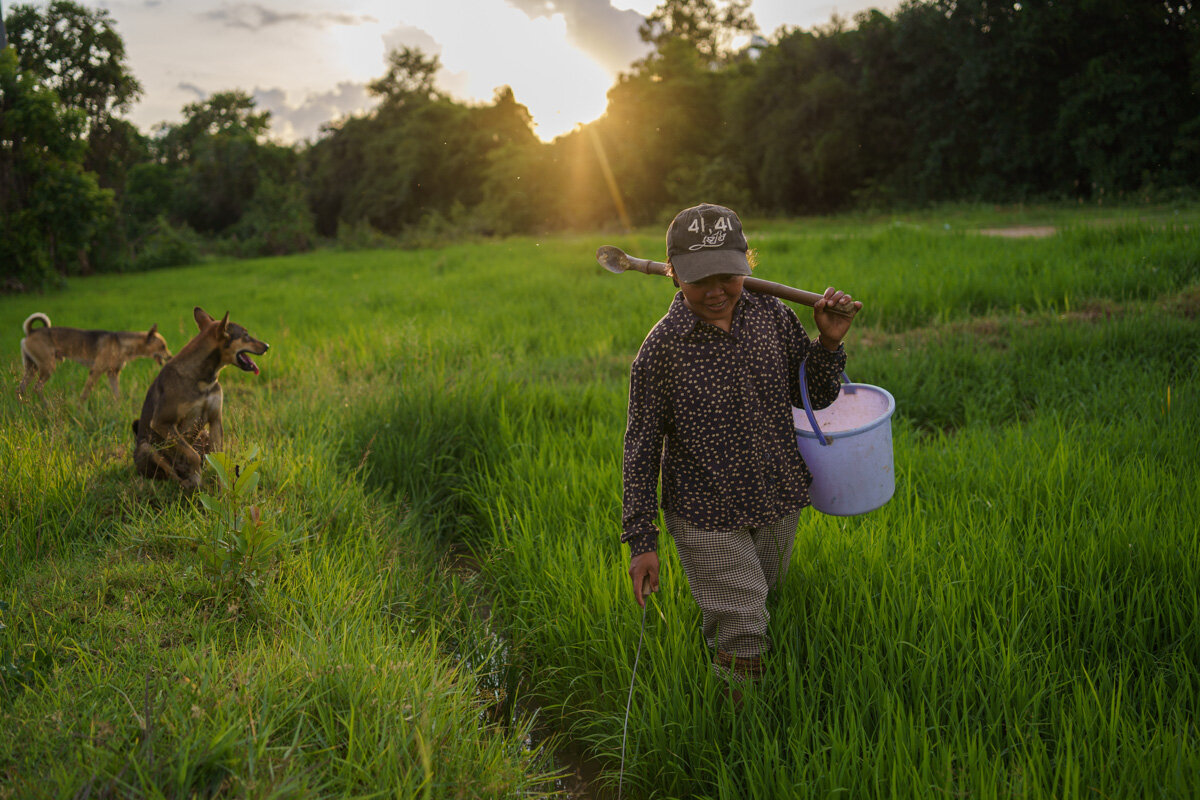
02 - Lean Socheatra
July 23, 2020 - Kampong Speu (Cambodia). Kiev En - Len Socheatara’s mother - collect crabs in the rice fields that surround their house. Before Covid-19, Socheatra’s family could earn up to 40,000 Riel (US$10) per day but during the pandemic demand decreased and they can’t earn enough. Lately they haven’t been able to sell anything for three consecutive days. When this happens they can’t afford to eat and need to buy food from the market on credit, promising the vendors to pay them back when they have money. © Thomas Cristofoletti / UNICEF
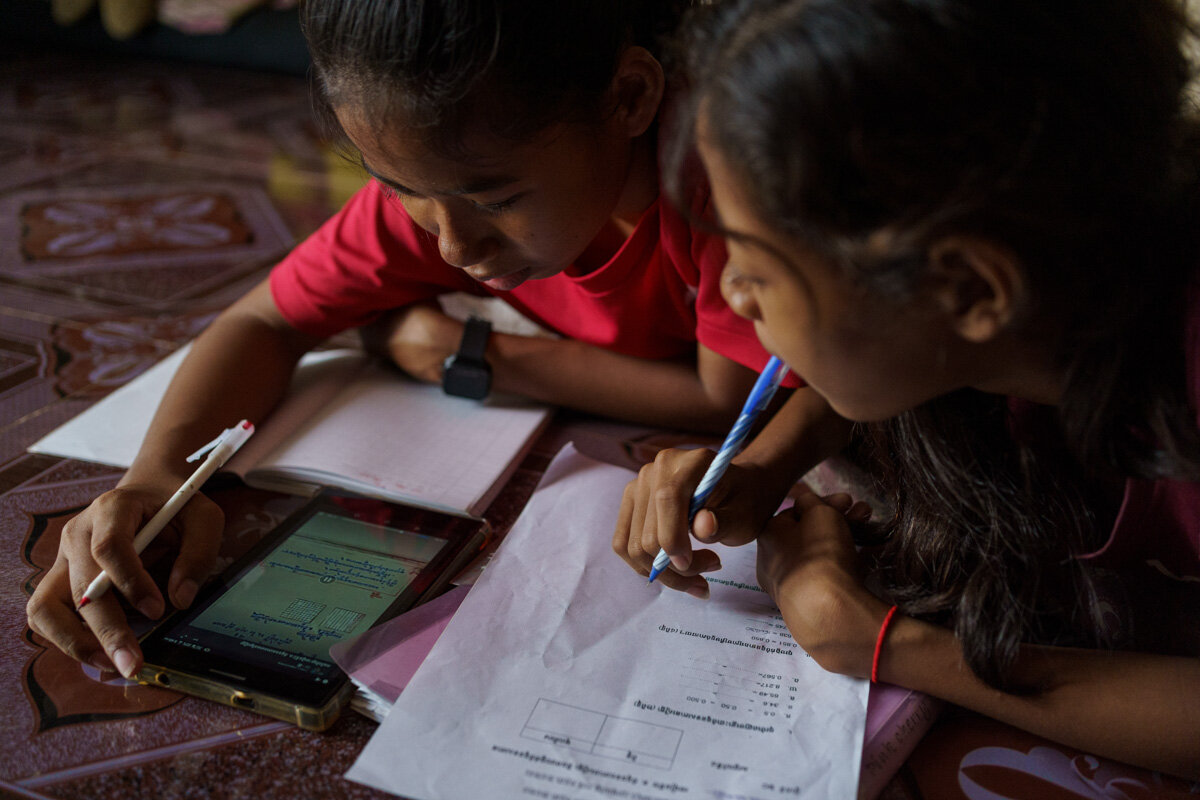
04 - Nha Nha
July 24, 2020 - Phnom Penh (Cambodia). Nha Nha helps her smaller sister Sopheap with her home-works using a live streaming lesson. The school has been using streaming apps to provide essential teacher-student interaction and creating a series of physical training exercises. Using Google classroom, Telegram and Facebook Groups, as well as Messenger, allow students to continue studying from the safety of home. To ensure students have suitable equipment to learn online, ISF loans tablet computers to those in need. Subsidies are also available for students who struggle to afford internet service. © Thomas Cristofoletti / UNICEF
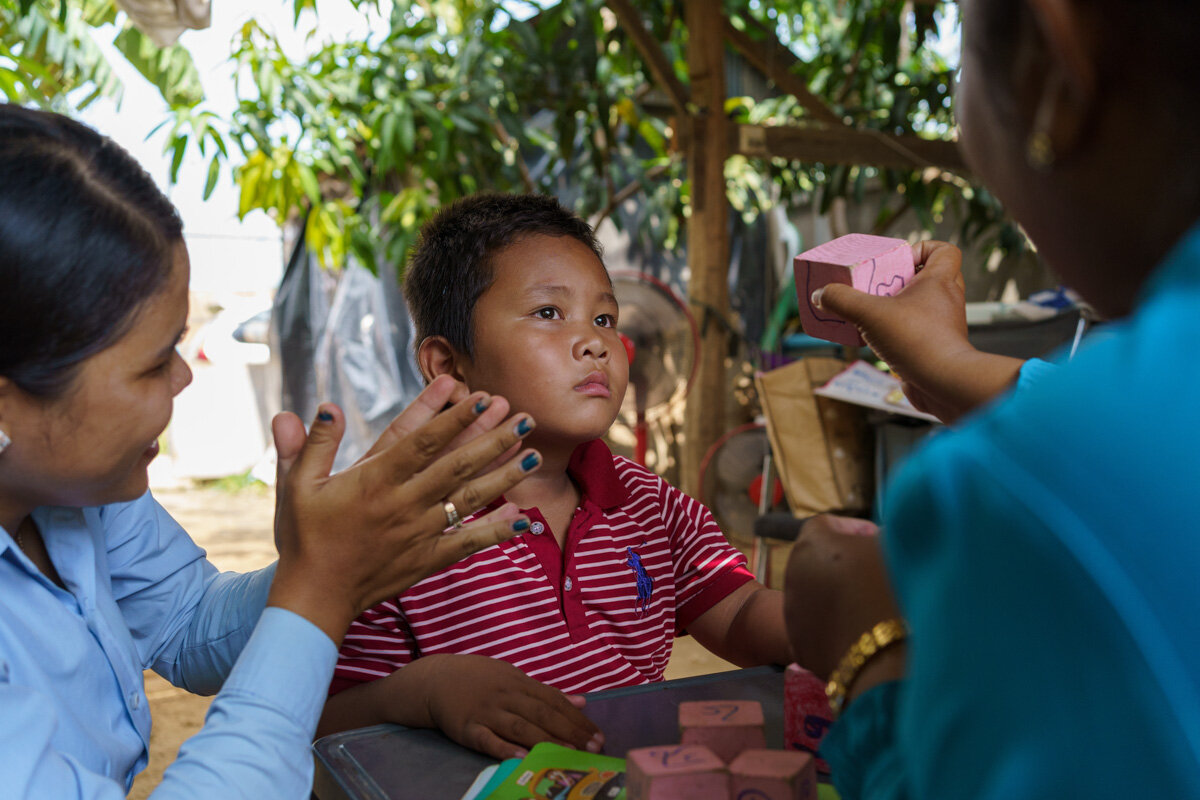
01 - Horn Chandy
July 23, 2020 - Kampong Speu (Cambodia). Honr Chansy provides home assistance to 4yo Kosal Socheat who suffers of severe autism. In the midst of school closures in response to Covid-19, Honr Chansy visits her students every two weeks to check on their progress and to monitor the level of engagement of their parents. © Thomas Cristofoletti / UNICEF
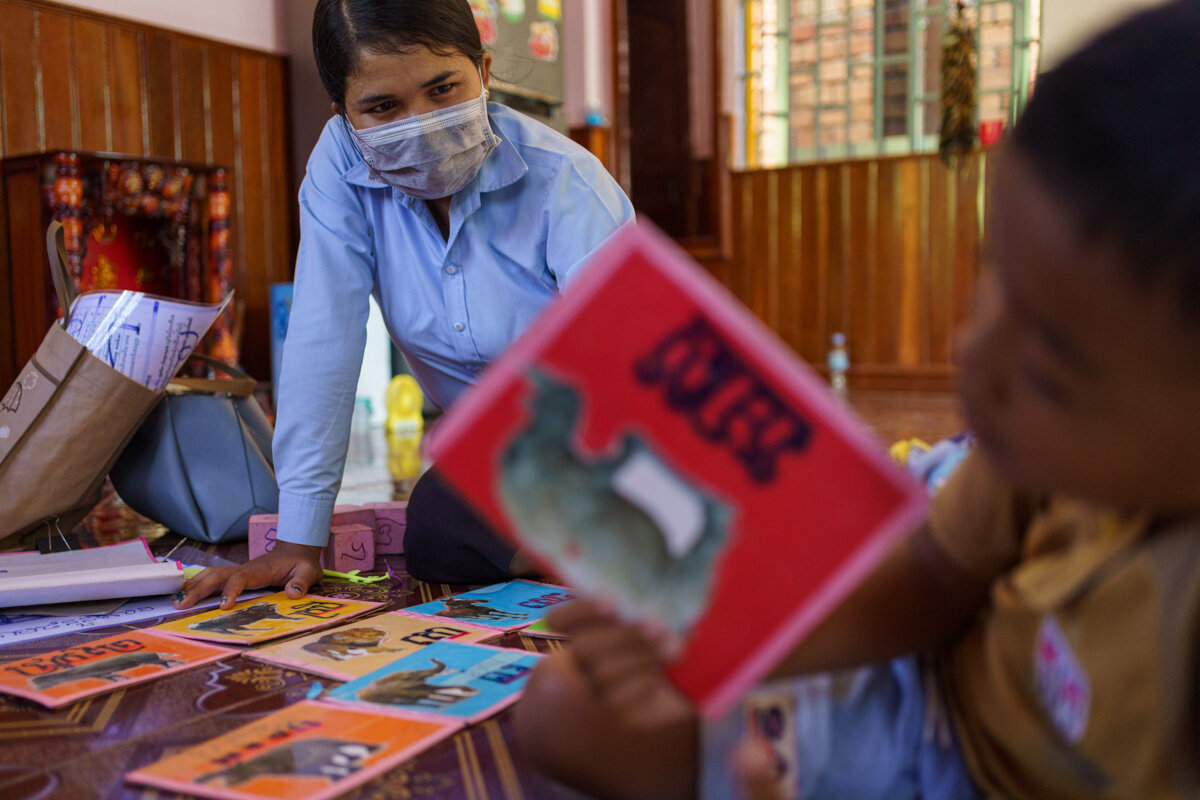
01 - Horn Chandy
July 23, 2020 - Kampong Speu (Cambodia). Honr Chansy provides home assistance to 4yo Na Song Hour who suffers of moderate autism. In the midst of school closures in response to Covid-19, Honr Chansy visits her students every two weeks to check on their progress and to monitor the level of engagement of their parents. © Thomas Cristofoletti / UNICEF

USAID India - Lead contamination
November 13, 2019, Karmalichak (India). Blood tests are performed on children and personal of the school located adjacent to a blue building where local residents produce lead acid batteries, like those found in automobiles, exposing her and the other children to dangerous levels of lead contamination. Exposure to lead presents a global health threat, particularly to children in low- and middle-income countries. Informal and substandard lead acid battery production and recycling is a widespread practice. Lead-contaminated waste, fumes and dust can migrate from these sites and be ingested or inhaled, causing lead poisoning, IQ loss in children, developmental and behavioural challenges, and other life-long health impacts. © Thomas Cristofoletti / Ruom for USAID
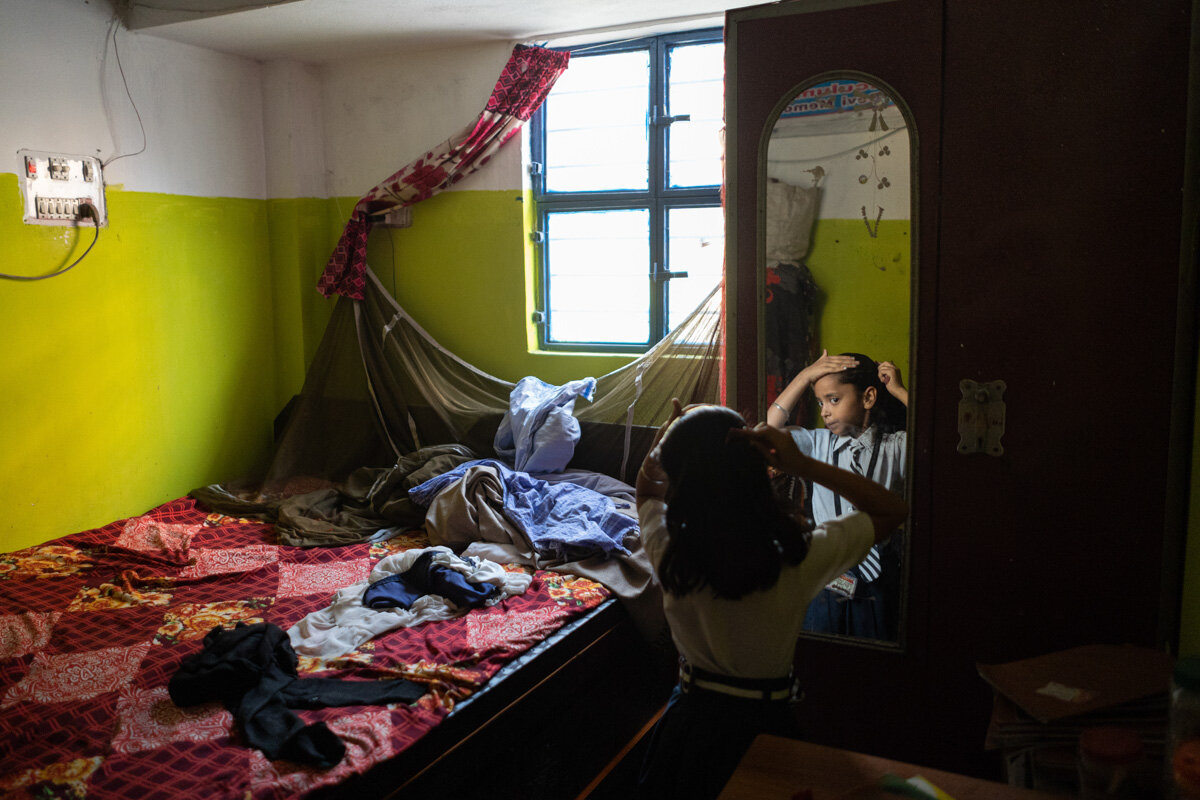
USAID India - Lead contamination
November 13, 2019, Karmalichak (India). Sonakshi gets ready to go to school. Her school is located adjacent to a blue building where local residents produce lead acid batteries, like those found in automobiles, exposing her and the other children to dangerous levels of lead contamination. Exposure to lead presents a global health threat, particularly to children in low- and middle-income countries. Informal and substandard lead acid battery production and recycling is a widespread practice. Lead-contaminated waste, fumes and dust can migrate from these sites and be ingested or inhaled, causing lead poisoning, IQ loss in children, developmental and behavioural challenges, and other life-long health impacts. © Thomas Cristofoletti / Ruom for USAID
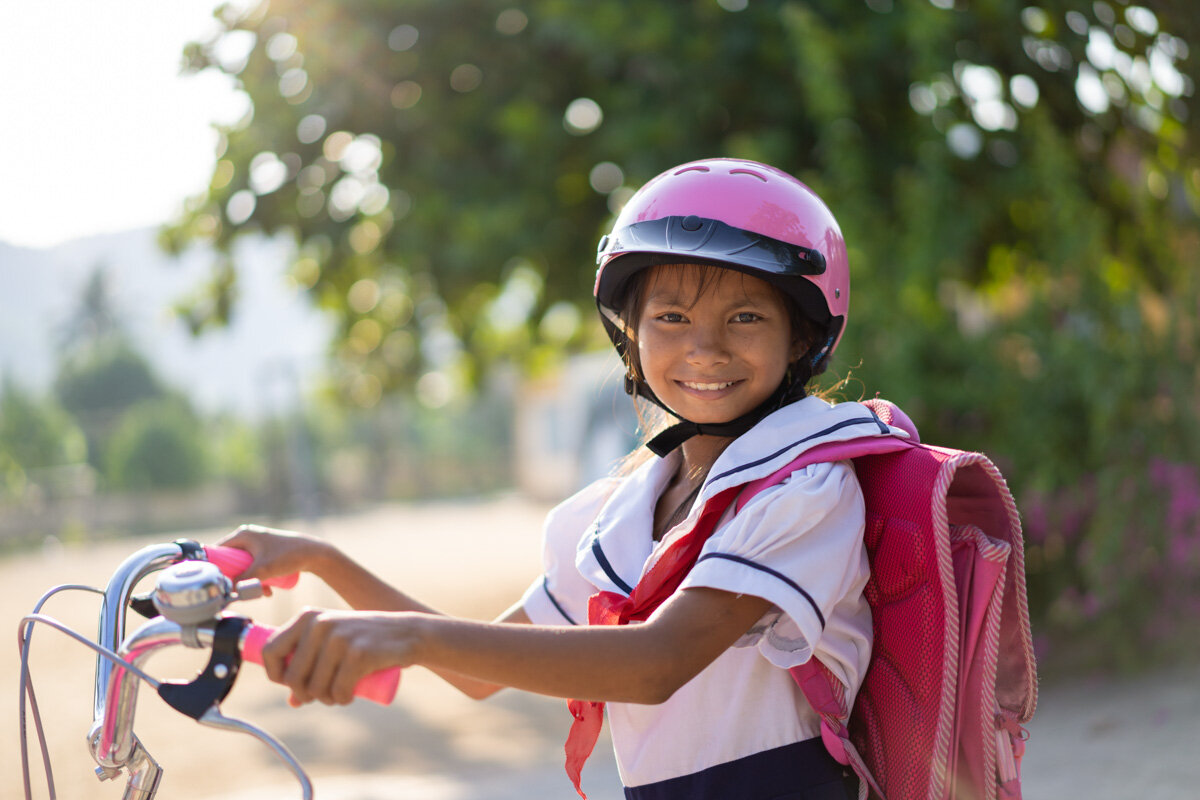
Obama Foundation - Bike for girls Vietnam
May 17, 2019: Cam Duc, Vietnam: Uyen — a 10-year-old student from Cam Duc, a rural village in Vietnam’s Central Highlands — with the new bike she received from the Rock Paper Scissors Children's Fund. Many students like Uyen often have to walk an hour each way to get to school, along potentially dangerous roads plagued by crime and human traffickers. Others have to balance classes with hard labor to financially support their families: young children from communities like Uyen’s are frequently pulled out of school for up to two months in order to pick cashews alongside their parents. To make matters even worse, Uyen’s family belongs to the Raglai ethnic minority, one of the more economically disadvantaged groups in Vietnam, with high rates of poverty, and poor access to education and healthcare that disproportionately affect young girls. To address these issues, the Rock Paper Scissors Children's Fund has partnered with groups like the Red Cross to identify low-income children like Uyen who are at risk of dropping out of school if not for additional support for transportation and education materials. Bikes like the one that she received will make it easier for them to get to class safely, while also providing a much-needed source of mobility for their families, who use them to commute, or make trips to the market. The Rock Paper Scissors Children's Fund is an Obama Foundation grantee. The Foundation’s Girls Opportunity Alliance works to empower adolescent girls by inspiring, empowering, and connecting grassroots organizations and leaders working to educate girls around the world.
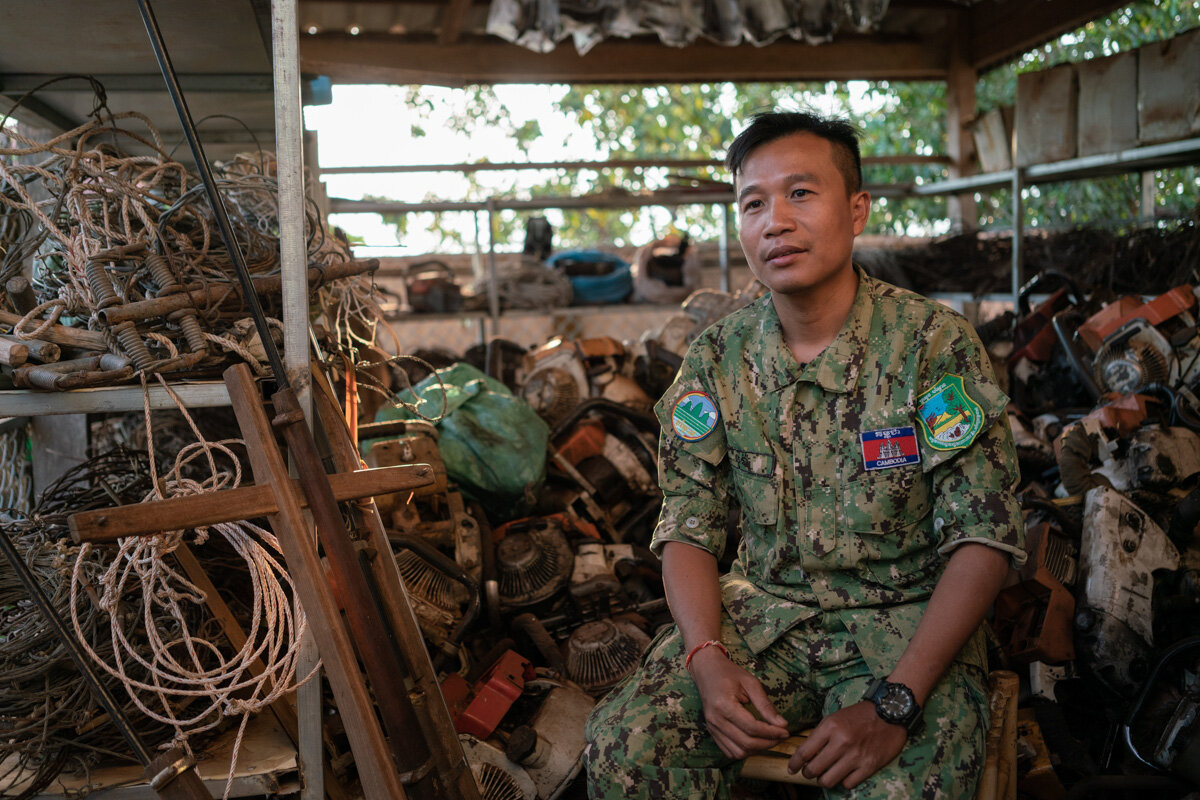
USC - Mondulkiri - Srepok Sanctuary
February 16, 2019 - Mondulkiri (Cambodia). Ly Bora, Deputy Director of Srepok Wildlife Sanctuary, poses during an interview in the WWF office of Sen Monorom. © Thomas Cristofoletti / Ruom for USC

USAID Ethiopia - Aberu
December 5, 2018 -- Samuel Shumuye, 38, leads his cattle out for grazing in South Tigray, Ethiopia. Samuel and his wife had been reliant on the Ethiopian Government’s social safety net program to provide food for their family of five, but they wanted to be independent. With help from USAID, they learned how to save money, diversify their income sources, and take out loans to invest in business. Within a year, they self-graduated from the government program, confident they could weather setbacks caused by drought and crop loss on their own. © Thomas Cristofoletti / Ruom for USAID

Kopi Lestari Aceh Indonesia
August 14, 2018 - Takengon (Indonesia). Linda (27), Nurhayati (20) and Hasni Laila (24) work in the tree nursery run by the local cooperative. Kopi Lestari is an agroforestry project deployed at landscape level in partnership with coffee farmers across Indonesia. The aim is to help them regenerate their ecosystems and diversifying their crops to increase climate resilience and reduce the risk of shifting to monoculture productions such as palm oil.© Thomas Cristofoletti / Ruom
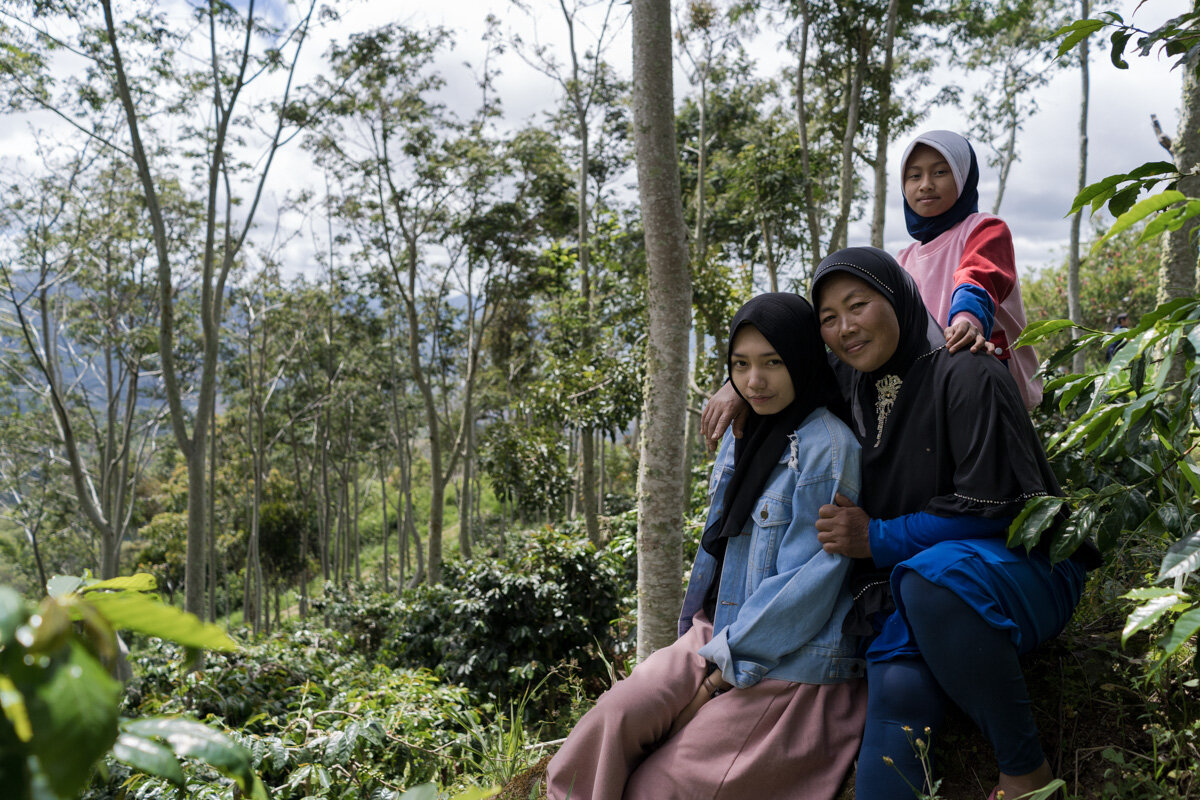
Kopi Lestari Aceh Indonesia
August 14, 2018 - Takengon (Indonesia). Irwani (46), Melvi (24) - her daughter - and Dina (12) - her granddaughter pose for a picture inside the family’s coffee plantation. This is another “role” farm where every inch is smartly used to get a better and more sustainable products with less impact on the nature. The family has a strong connection with the forest that surrounds the property and they want wild animals such as monkeys and orangutans to have a safe space where they can live. They started 3 years ago and they now own a 3 hectares agroforestry plantation and 1 hectare cultivated with coffee. They have around 900 plants of coffee and they are able to produce around 2.5 tons of product every year. They also own cows and use the manure as a natural fertilizer and to run a biodigester to produce natural gas. Melvi is still studying economy at the local university, and after the graduation she would like to be a teacher. © Thomas Cristofoletti / Ruom
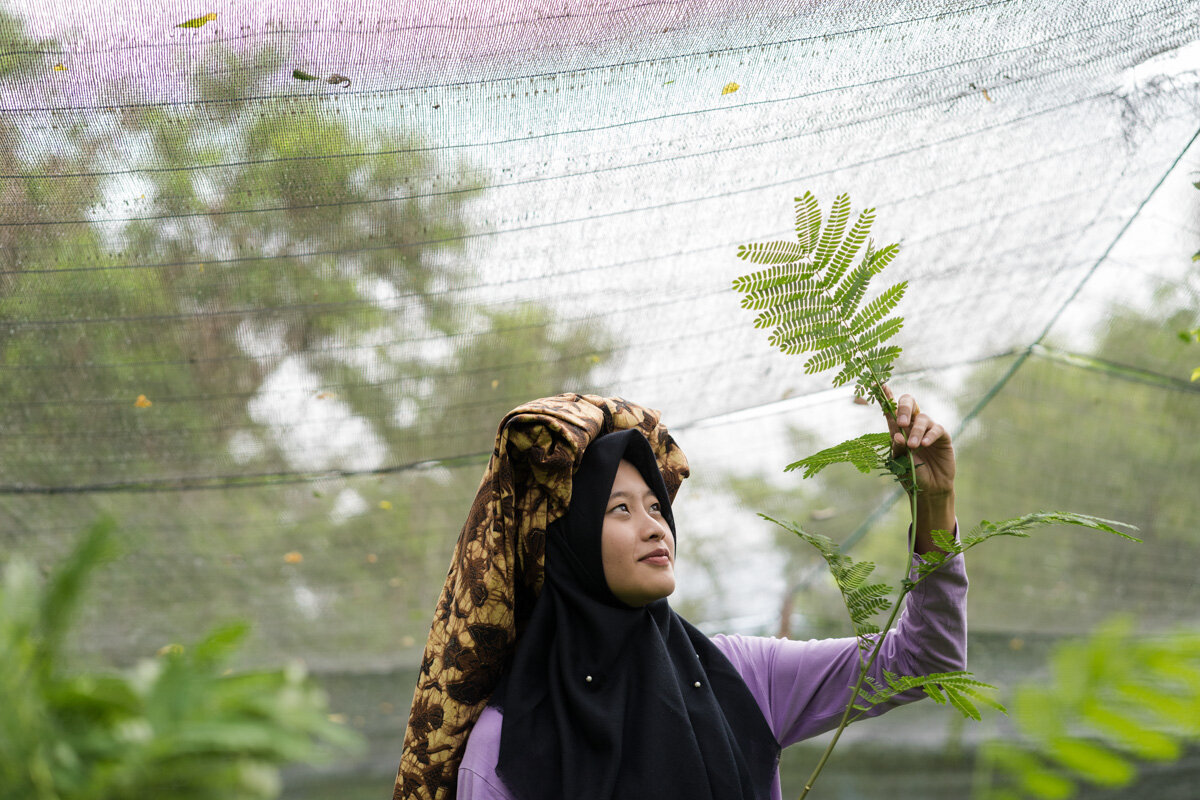
Kopi Lestari Aceh Indonesia
August 14, 2018 - Takengon (Indonesia). Marissa (21) checks one of the plant in the tree nursery run by the local cooperative. Kopi Lestari is an agroforestry project deployed at landscape level in partnership with coffee farmers across Indonesia. The aim is to help them regenerate their ecosystems and diversifying their crops to increase climate resilience and reduce the risk of shifting to monoculture productions such as palm oil.© Thomas Cristofoletti / Ruom
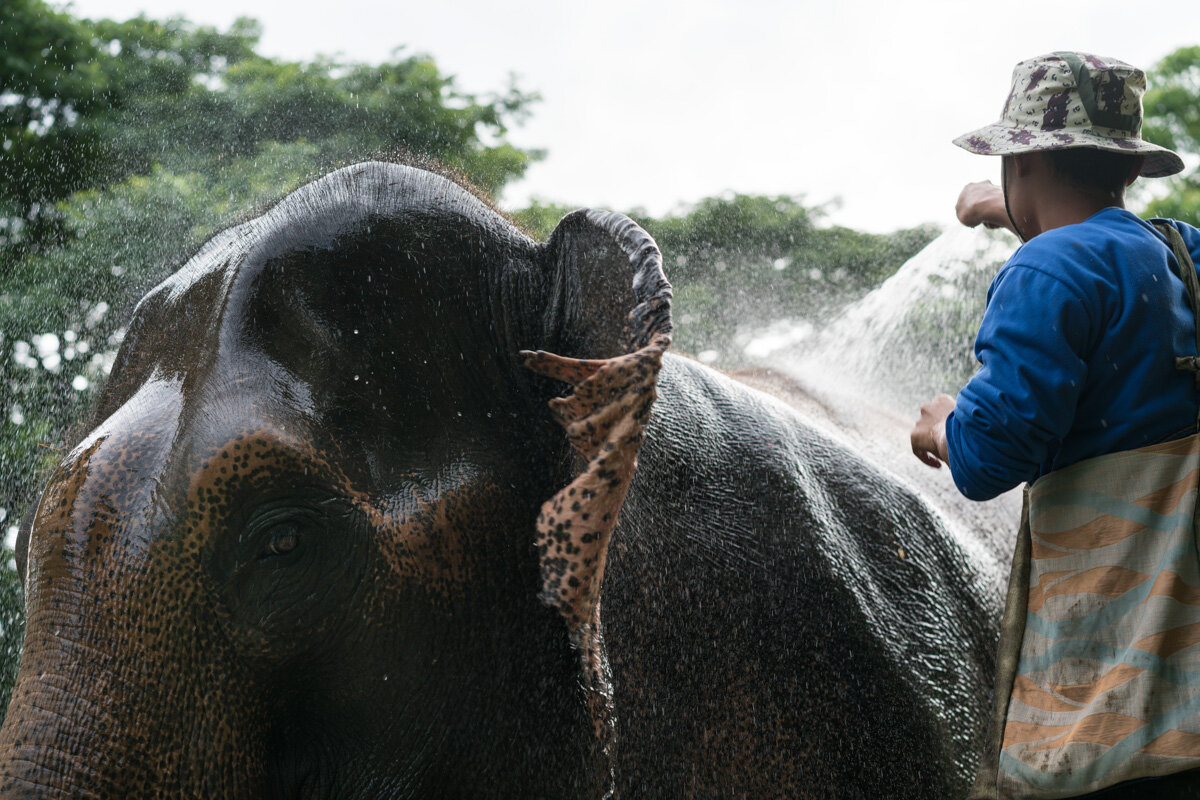
Wild Animal Protection Thailand
July 23, 2018 - Chiang Rai (Thailand). Mahout Thapdanai and his elephant Modee. © Thomas Cristofoletti / Ruom for WAP
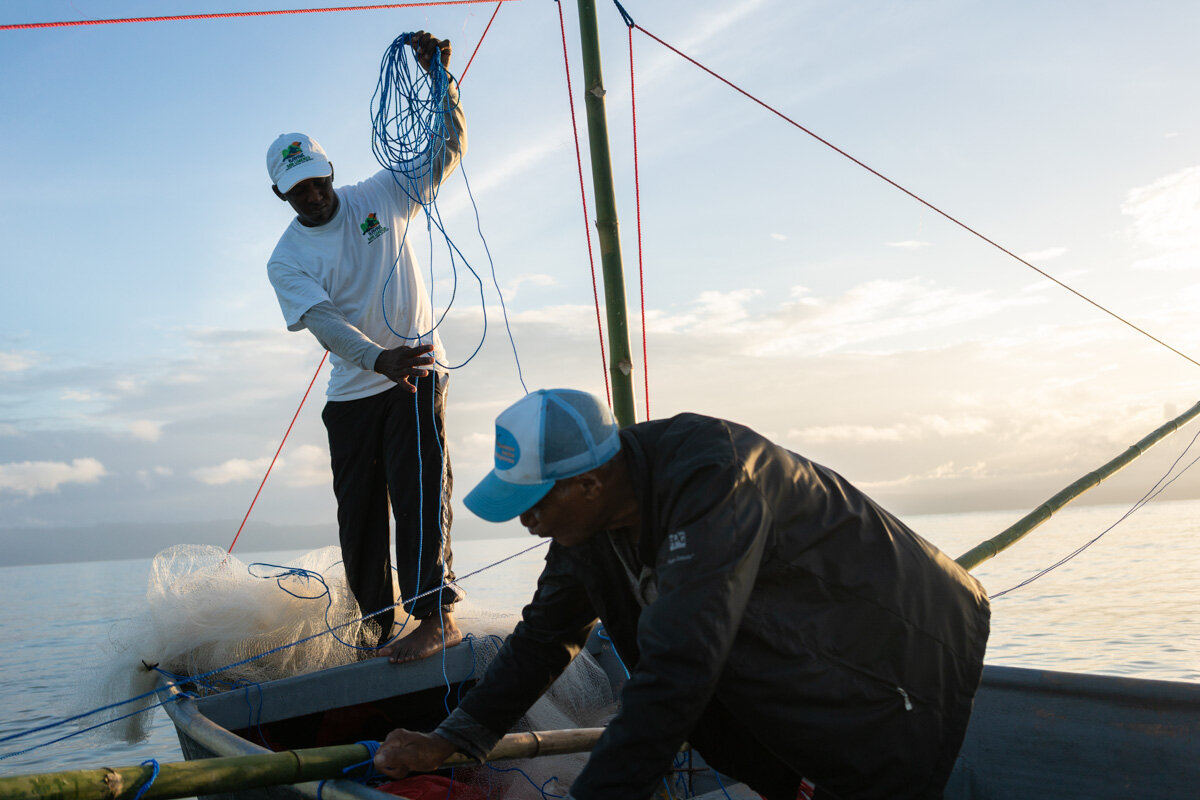
USAID Domincan Republic - Yamara
May 24, 2018 - Sanchez (Dominican Republic). Sanchez fishermen Juan Calcone and Jose Alberto often work together to haul in their catch. They are on the front lines against overfishing in their community and use a special kind of fishing net that causes less damage to the bay. © Thomas Cristofoletti / Ruom for USAID
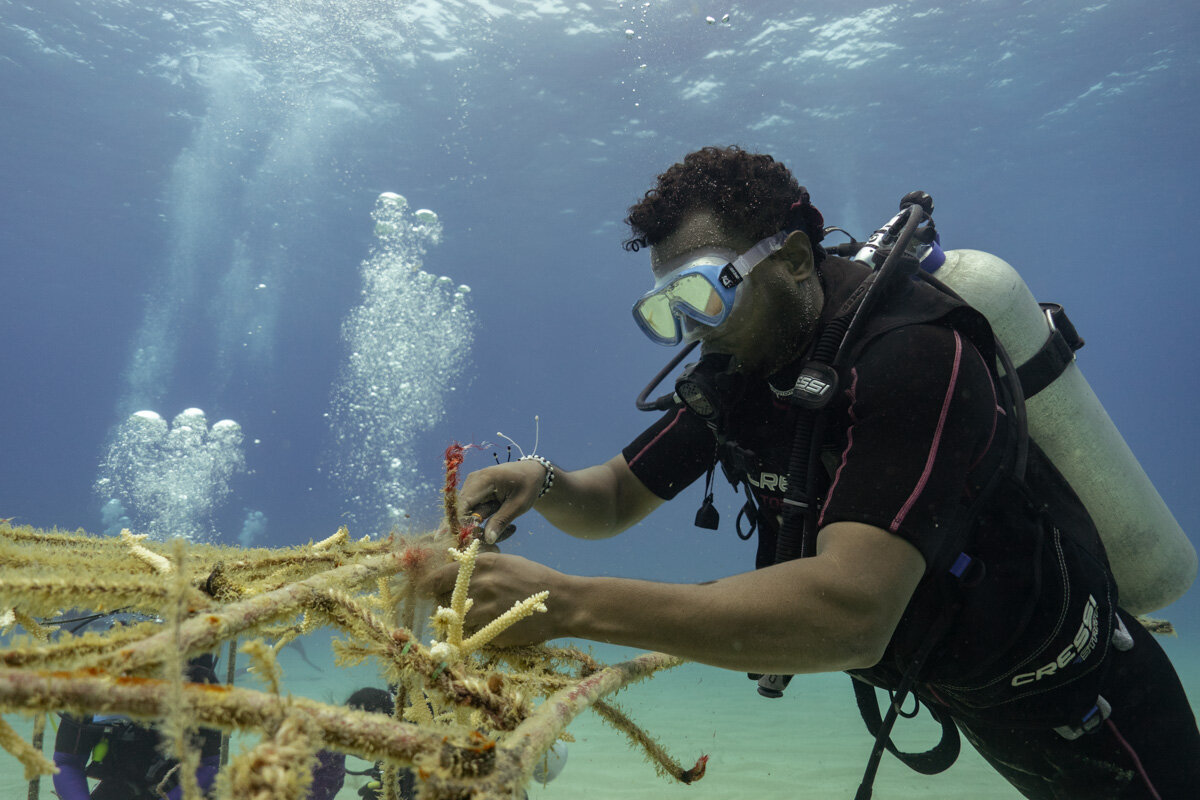
USAID DR - Coral restoration
May 30, 2018 - Las Terrenas (Domincan Republic). Divers attach small corals to a metal structur, part of the efforts by USAID to help restoring the local reef. In total, 10 structures in the shape of marine animals that hold about 480 coral frgaments, were implanted between August 2017 and November 2017. The goal is to rehabilitate at least 1km of the coral barrier within 2 years. © Thomas Cristofoletti / Ruom for USAID
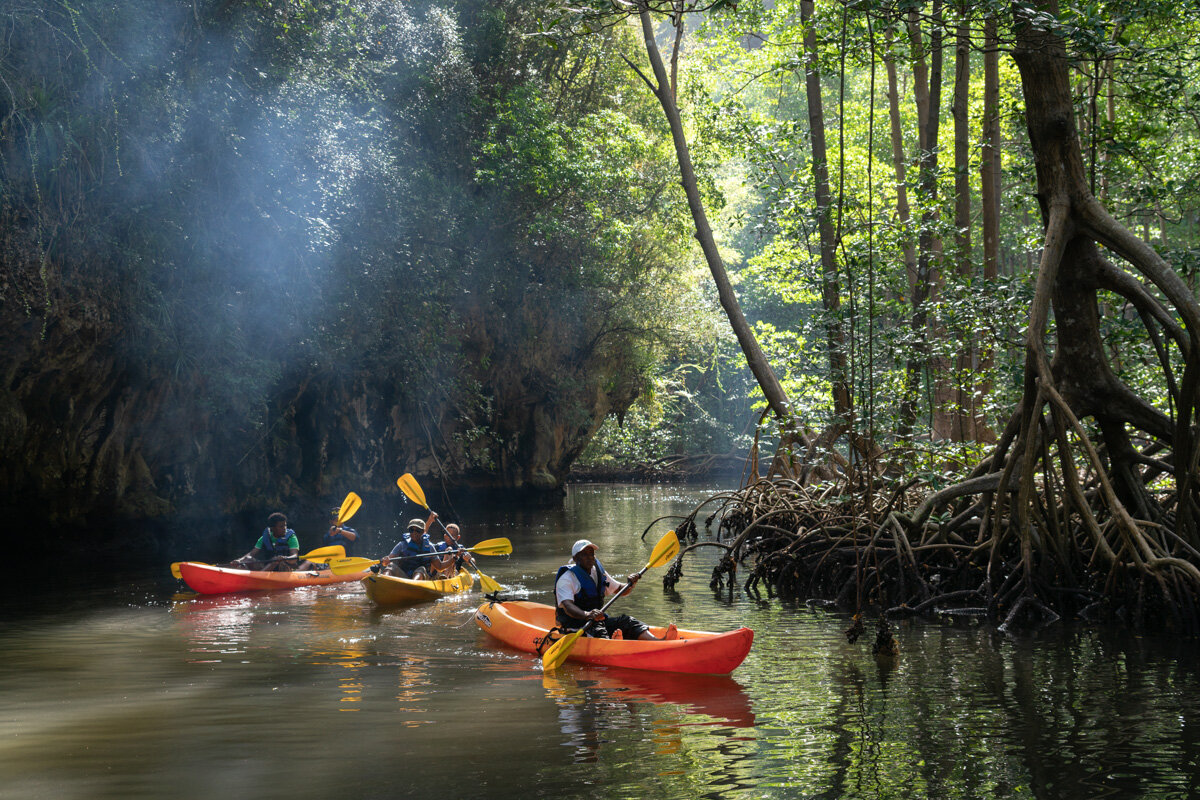
USAID Domincan Republic - Yamara
May 24, 2018 - Sanchez (Dominican Republic). Juan Calcone is both fishermen and nature guide in his hometown of Sanchez, Dominican Republic. A USAID project is helping fishermen like him with a deep knowledge of the Sanchez Bay boost their livelihoods through both improved fishing techniques and tourism. Bird watching, kayaking and being wowed by mangroves are just some of the options for visitors. © Thomas Cristofoletti / Ruom for USAID
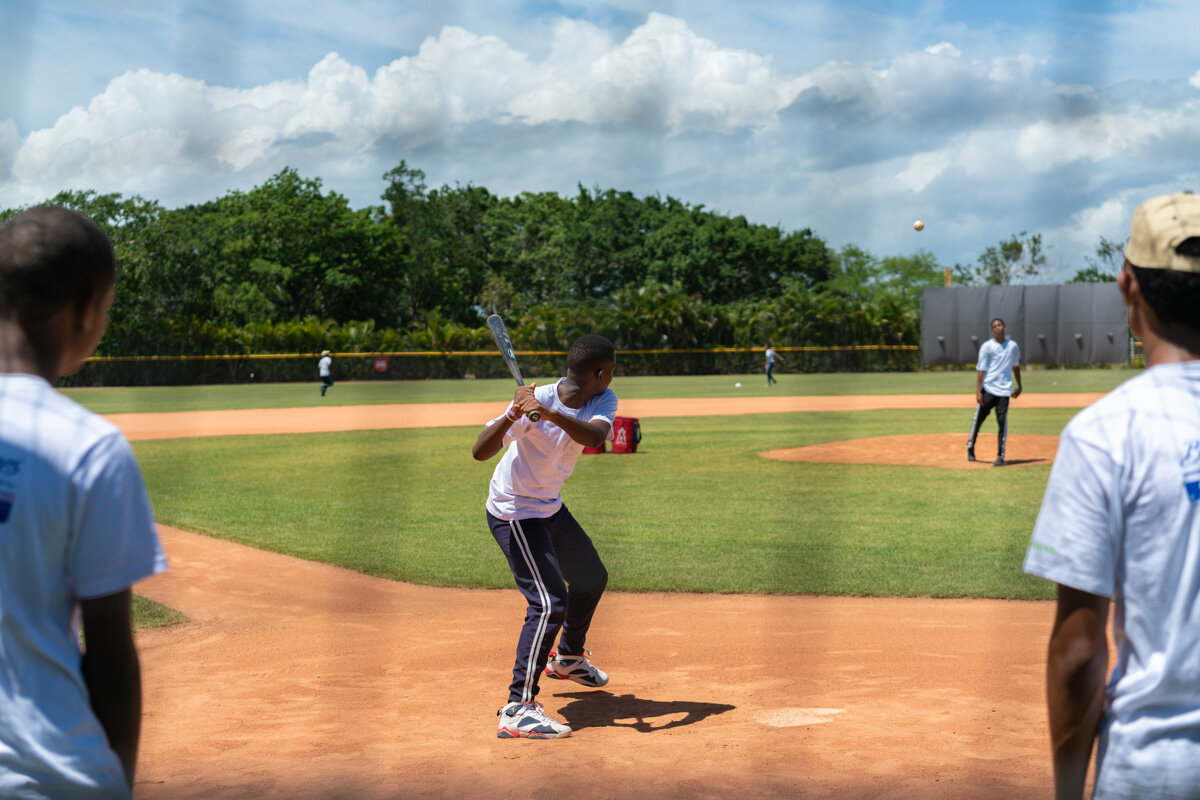
USAID DR - Erison
May 23, 2018 - Santo Domingo (Dominican Republic). Erison Frias and his classmates warmed up at the Angels Academy in the outskirts of Santo Domingo. USAID and Major League Baseball work through Baseball Cares to promote literacy and life skills to children in the Dominican Republic. Baseball players from the Dominican Republic, including recent MLB Hall of Famer Vladimir Guerrero, are helping inspire the students to stay in school and succeed in life. © Thomas Cristofoletti / Ruom for USAID
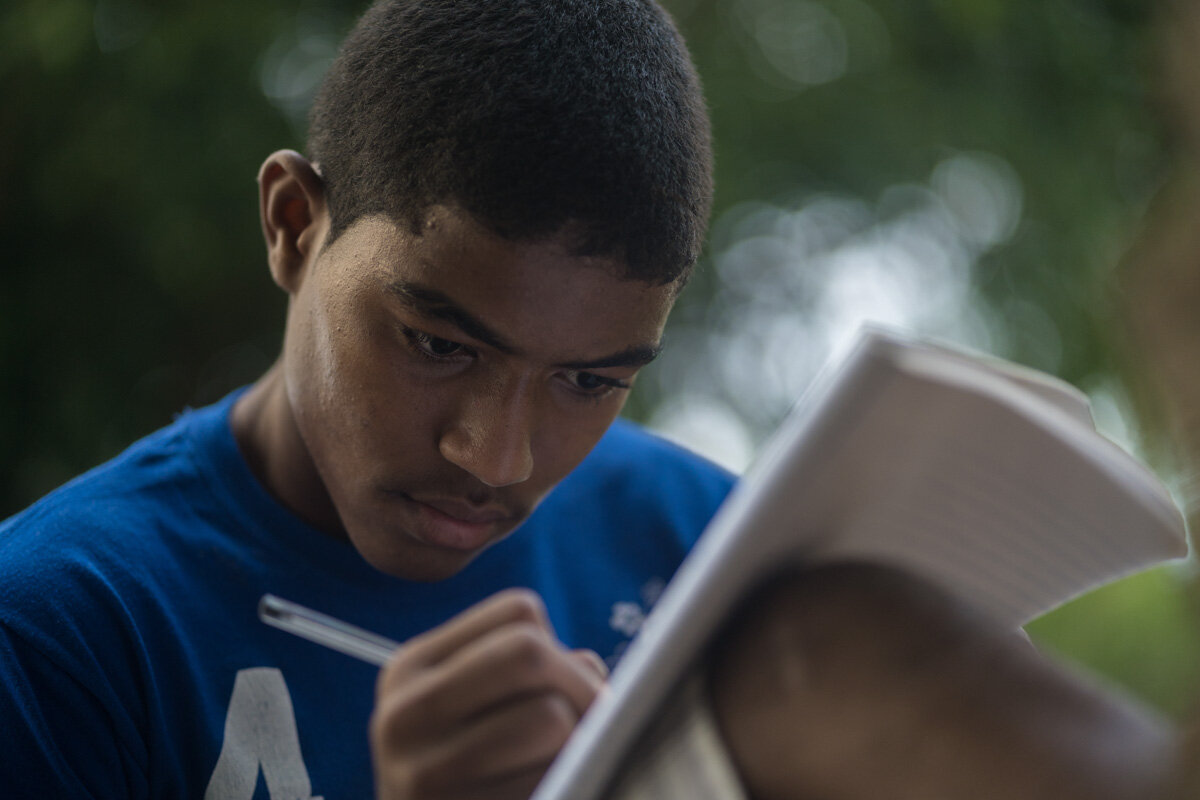
USAID DR - Erison
May 21, 2018 - San Cristóbal (Dominican Republic). Erison Frias, 15, does his homework in the courtyard of his home. USAID and Major League Baseball work through Baseball Cares to promote literacy and life skills to children in the Dominican Republic, including through a writing contest. Erison Frias, 15, was one of the winners, and has had his story illustrated and published. © Thomas Cristofoletti / Ruom for USAID
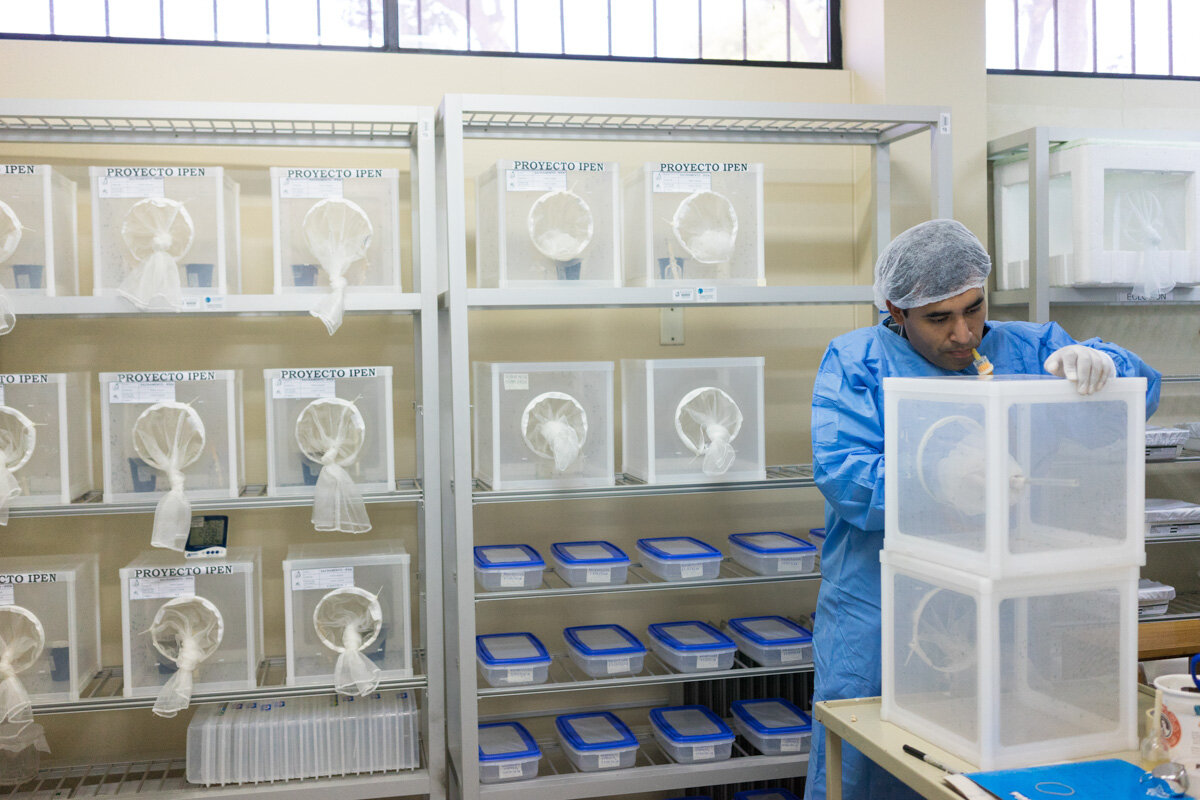
USAID Peru - National Health laboratory
March 08, 2018 - Lima (Peru). A technician uses a special pipe to capture mosquitos to use in a repellent resistance test. In Peru, USAID supports the national health laboratories to study mosquitoes that spread Zika and help the country combat the spread of the disease. USAID strengthens government health systems across Latin America to combat Zika and prepare for future health threats. In Peru, USAID is leveraging community partners and leadership to disseminate key Zika information and battle Aedes aegypti mosquitoes through low-cost community-based methods. By working in Latin America and the Caribbean to control the spread of Zika, USAID is helping reduce travel-related infections and keeping citizens in the United States safe and healthy. © Thomas Cristofoletti / RUOM for USAID
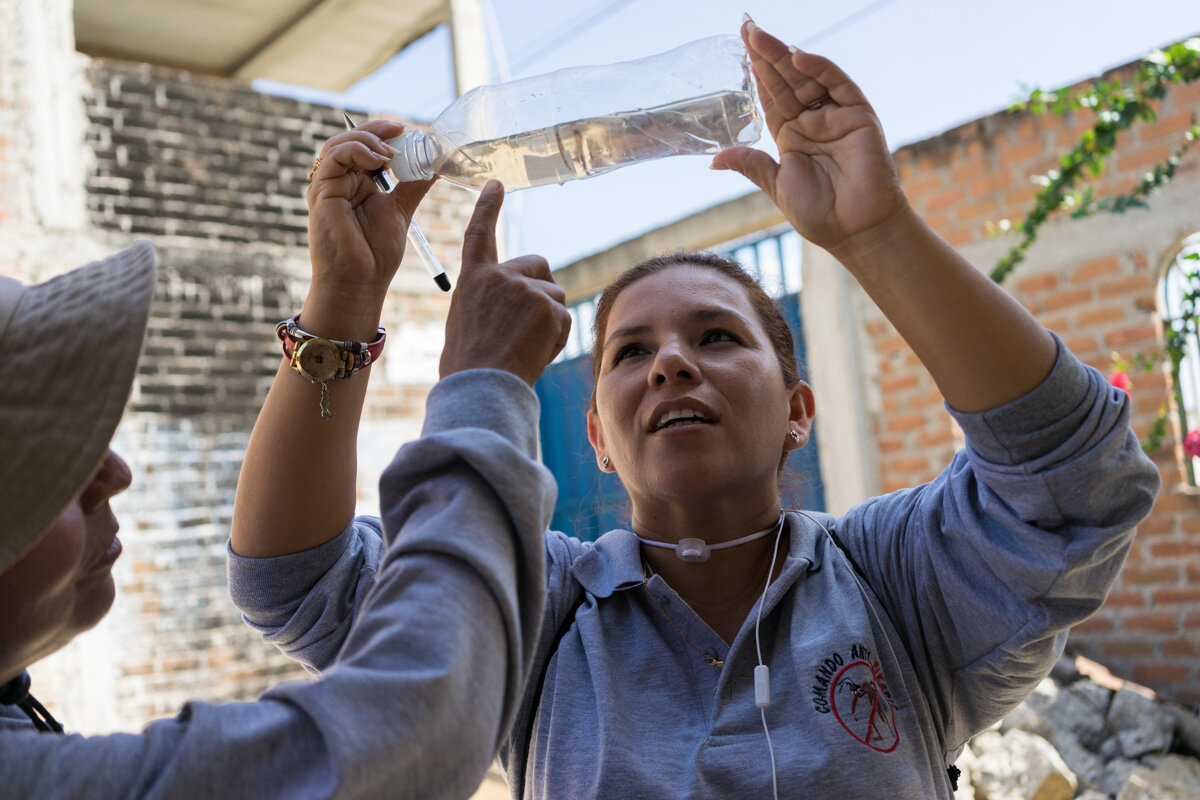
USAID Peru Zika - Community volunteers
March 11, 2018 - Tumbes (Peru). Community health volunteers Alicia and Magda check the content of an ovitrap looking for mosquitoes’ eggs. The volunteers monitor for mosquito hot-spots using ovitraps, a community-based surveillance method, and report data to the local health department. In Peru, USAID supports the national health laboratories to study mosquitoes that spread Zika and help the country combat the spread of the disease. USAID strengthens government health systems across Latin America to combat Zika and prepare for future health threats. In Peru, USAID is leveraging community partners and leadership to disseminate key Zika information and battle Aedes aegypti mosquitoes through low-cost community-based methods. By working in Latin America and the Caribbean to control the spread of Zika, USAID is helping reduce travel-related infections and keeping citizens in the United States safe and healthy. © Thomas Cristofoletti / RUOM for USAID

WWF Thailand, Kui Buri - Worravoot Kassamee and Baan Rai lodge
February 21, 2018 - Prachuap Khiri Khan (Thailand). Worravoot Kassamee (33) works in his pineapple plantation. He was a former WWF staff and now works as a farmer and as a tour guide at the park. © Thomas Cristofoletti / Ruom for WWF
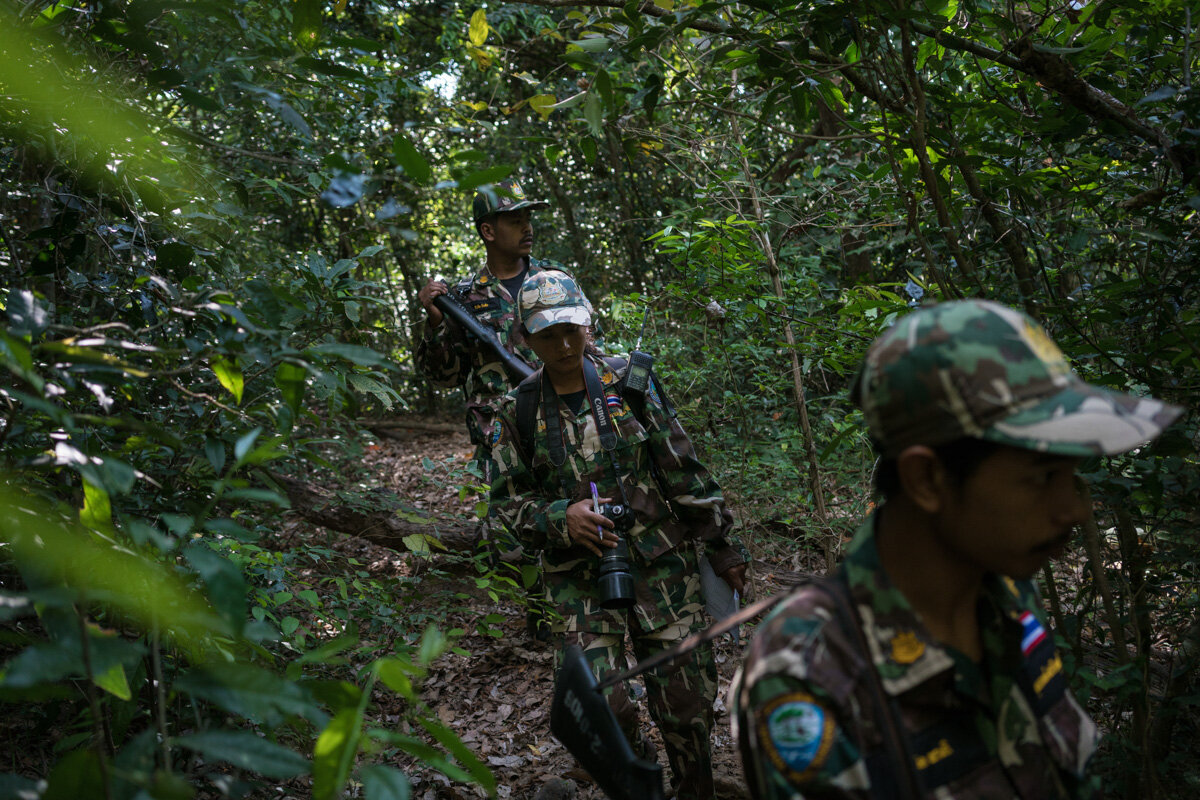
WWF Thailand, Kui Buri - Woraya Makai and patrol
February 23, 2018 - Prachuap Khiri Khan (Thailand). Woraya Makai (34) walks through the jungle during a morning patrol together with a team of rangers. She’s the only female ranger deployed in Kui Buri and in charge of photographing and surveying the animals she’s seeing around the park. © Thomas Cristofoletti / Ruom for WWF
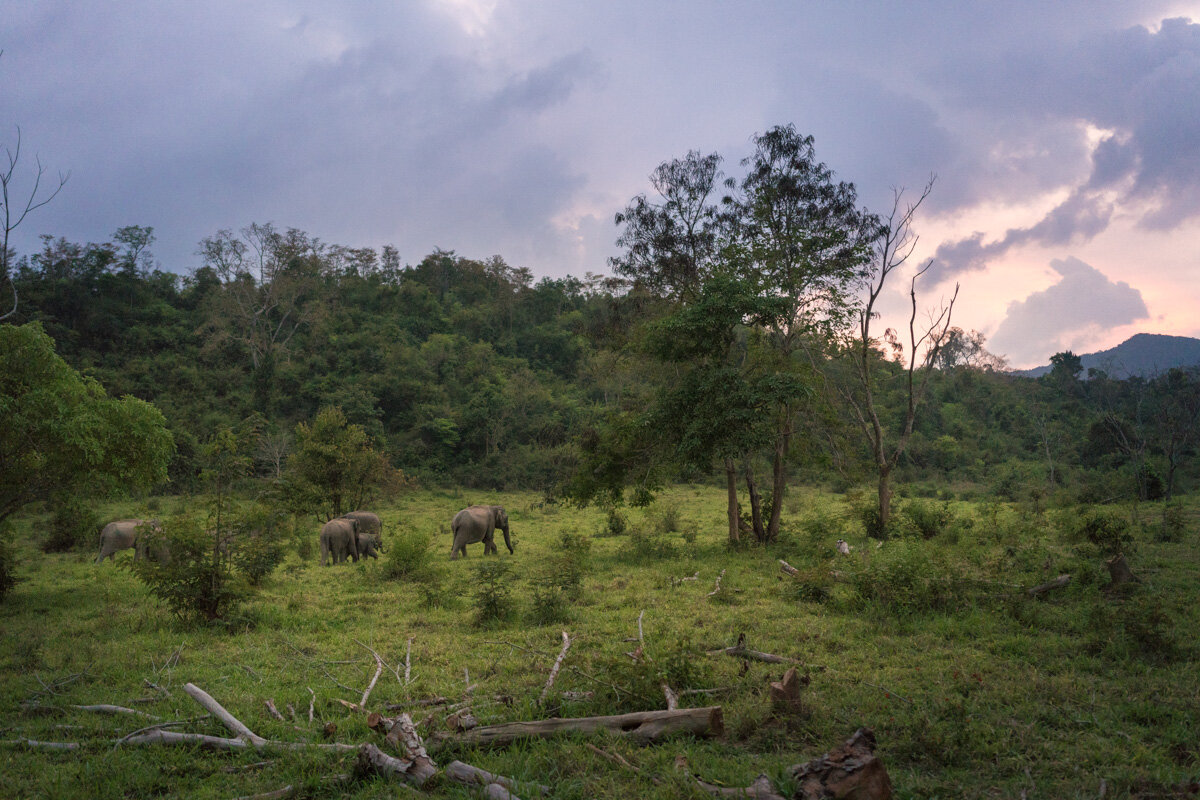
WWF Thailand, Kui Buri - Elephants
February 26, 2018 - Prachuap Khiri Khan (Thailand). An herd of Asian elephants is seen walking inside the Kui Buri national park. © Thomas Cristofoletti / Ruom for WWF
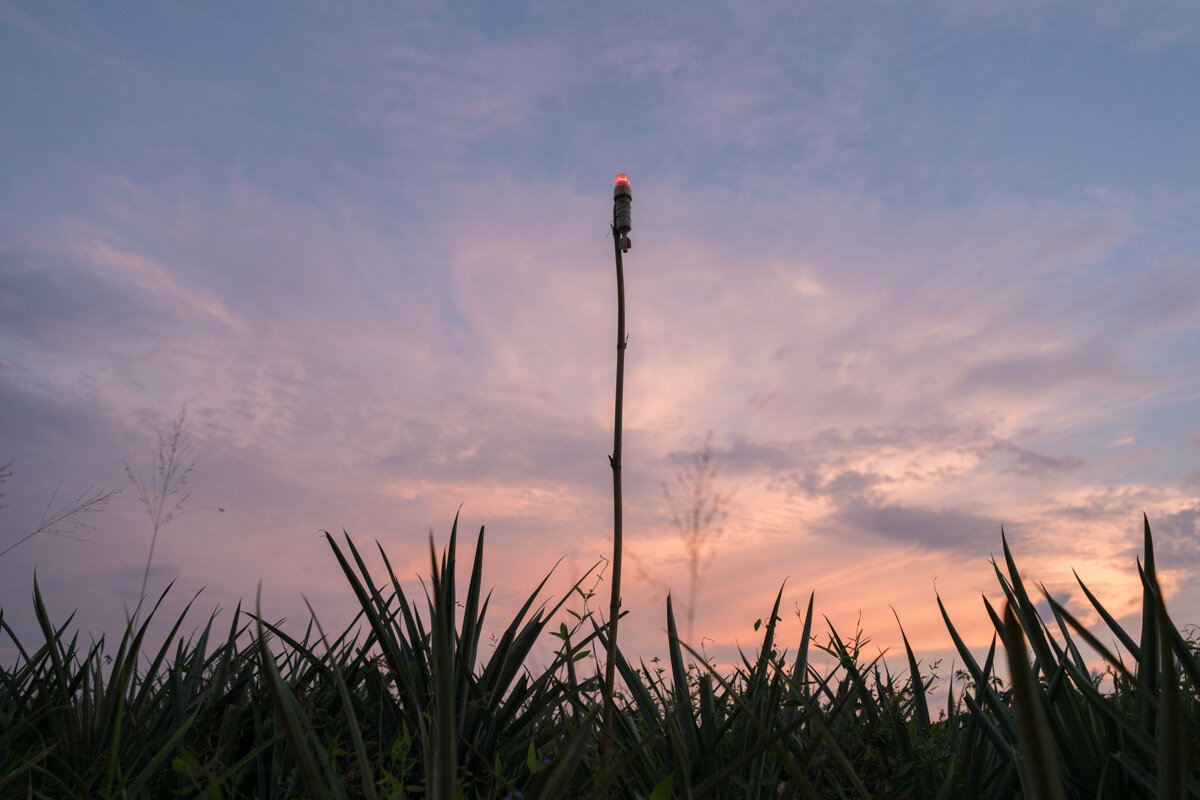
WWF Thailand, Kui Buri - Outside the Park
February 24, 2018 - Prachuap Khiri Khan (Thailand). Among the different devices and techniques used by farmers and villagers to discourage elephants to enter their fields, there are flash lights that blimp during the night. © Thomas Cristofoletti / Ruom for WWF
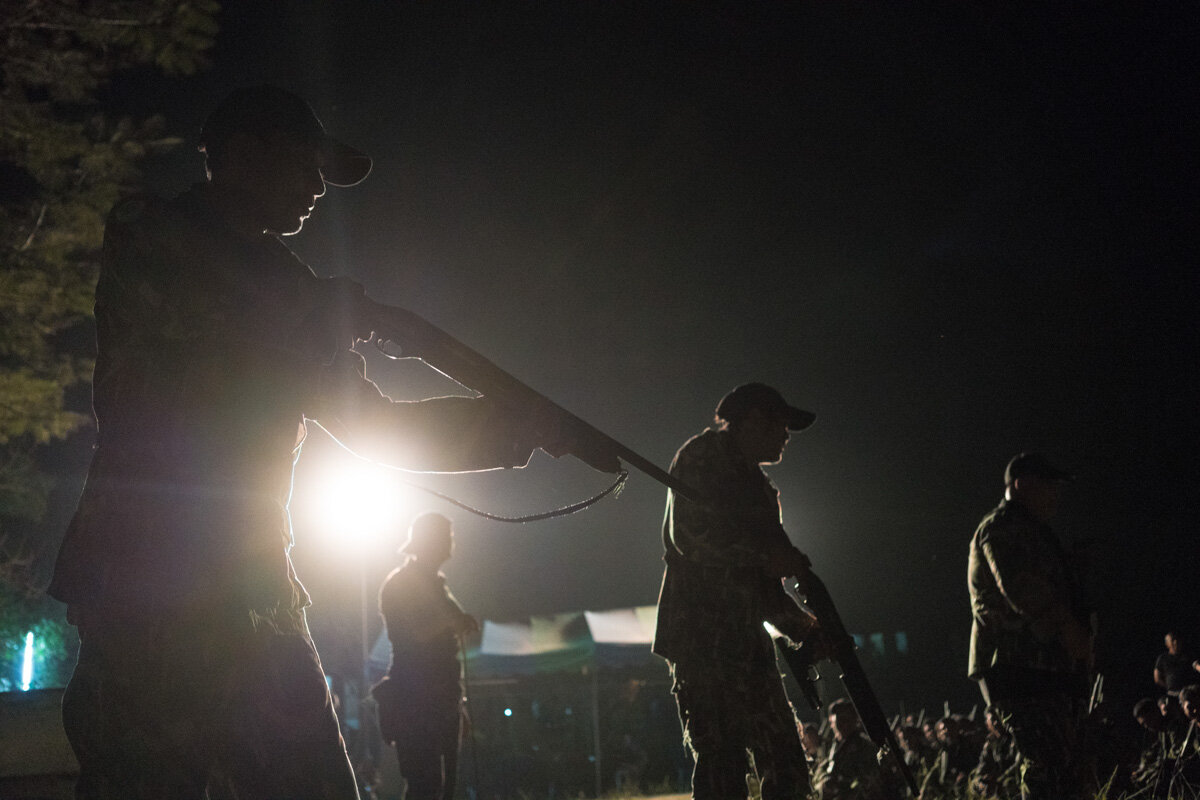
WWF Thailand, Kui Buri - Smart Patrol Training
February 25, 2018 - Prachuap Khiri Khan (Thailand). Rangers from the Kui Buri park train for the SMART Patrol, a 4-day event organized to help protected area and wildlife managers to better monitor, evaluate and adaptively manage patrolling activities. During the training the rangers learnt how to improve the use of weapons, how to setup a car check point and other activities to prevent and stop illegal poaching in the park. © Thomas Cristofoletti / Ruom for WWF
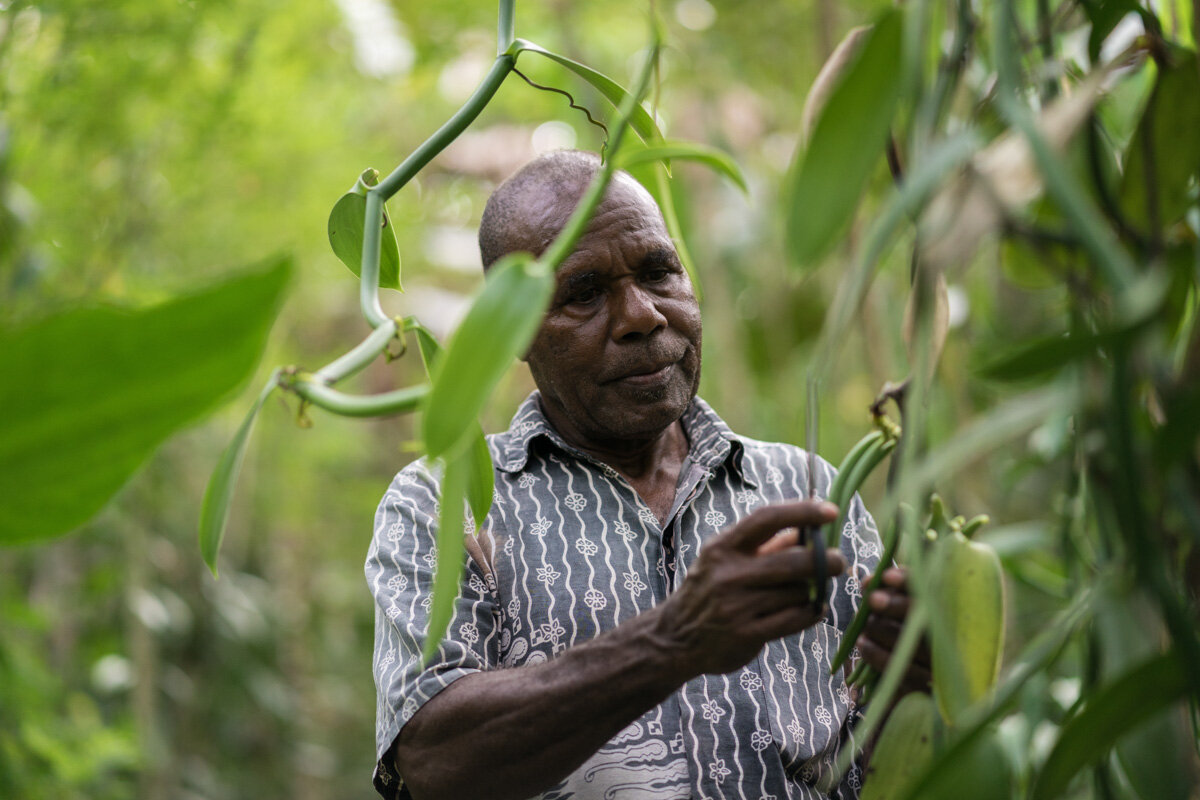
USAID Indonesia - Papua Vanilla
January 9, 2018 - Papua (Indonesia). Farmer Agustinos Daka, 61, harvest vanilla beans in his farm. He's gonna then sell them at a cooperative, the first step in a global supply chain that sends his crop to the U.S. and around the world. “I am proud that my product is being exported to America,” he said. © Thomas Cristofoletti / Ruom for USAID
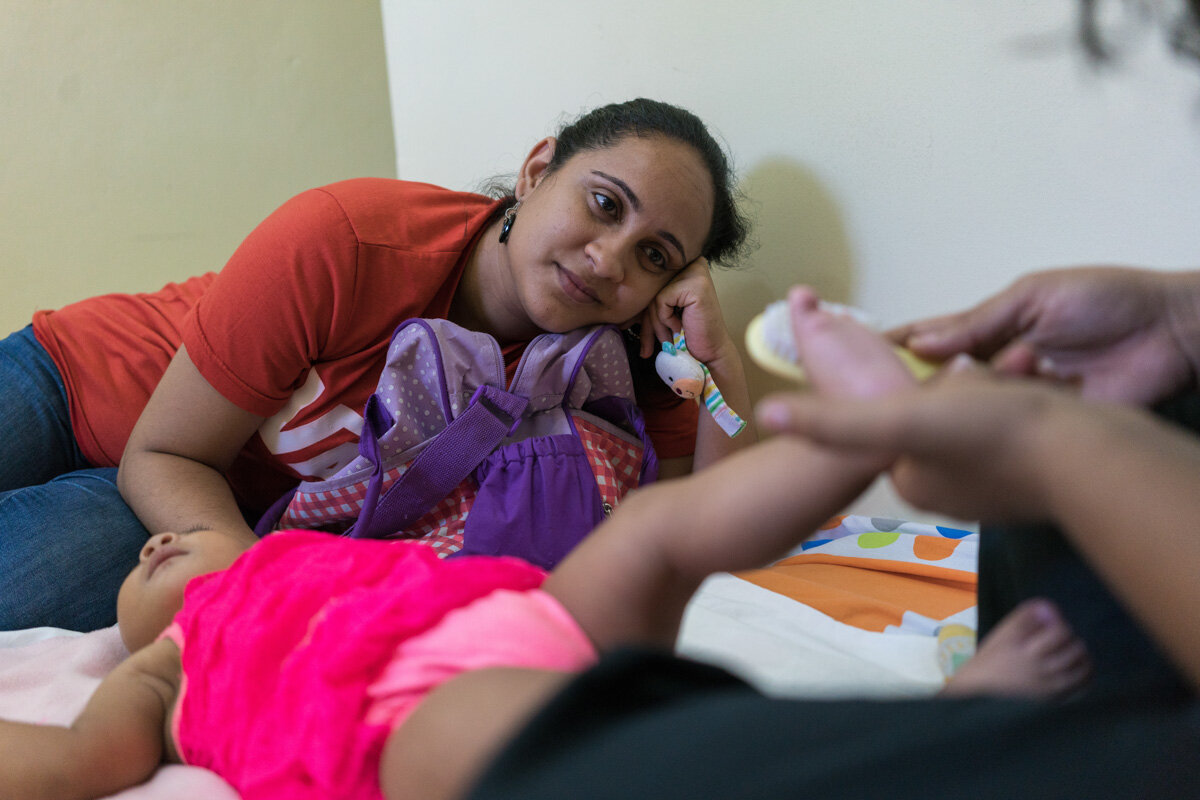
USAID DR - Arianny and Teanny
June 28, 2017 - San Cristóbal (Dominican Republic). Arianny Polanco during therapy session for her daughter Teanny in the local hospital of San Cristóbal. Arianny was diagnosed with Zika while pregnant with her daughter, Teanny, who was born with Microcephaly, a birth defect linked with the virus. USAID is strengthening health services to prevent Zika and provide care and support to affected families. By working in Latin America and the Caribbean to control the spread of Zika, USAID is helping reduce travel-related infections and keeping citizens in the United States safe and healthy. © Thomas Cristofoletti / RUOM for USAID

USAID DR - Zika
June 28, 2018 - Santo Domingo (Dominican Republic). Technicians study samples of mosquitoes collected during a prevention campaign to fight the spread of Zika virus. USAID is strengthening health services to prevent Zika and provide care and support to affected families. By working in Latin America and the Caribbean to control the spread of Zika, USAID is helping reduce travel-related infections and keeping citizens in the United States safe and healthy. © Thomas Cristofoletti / Ruom for USAID
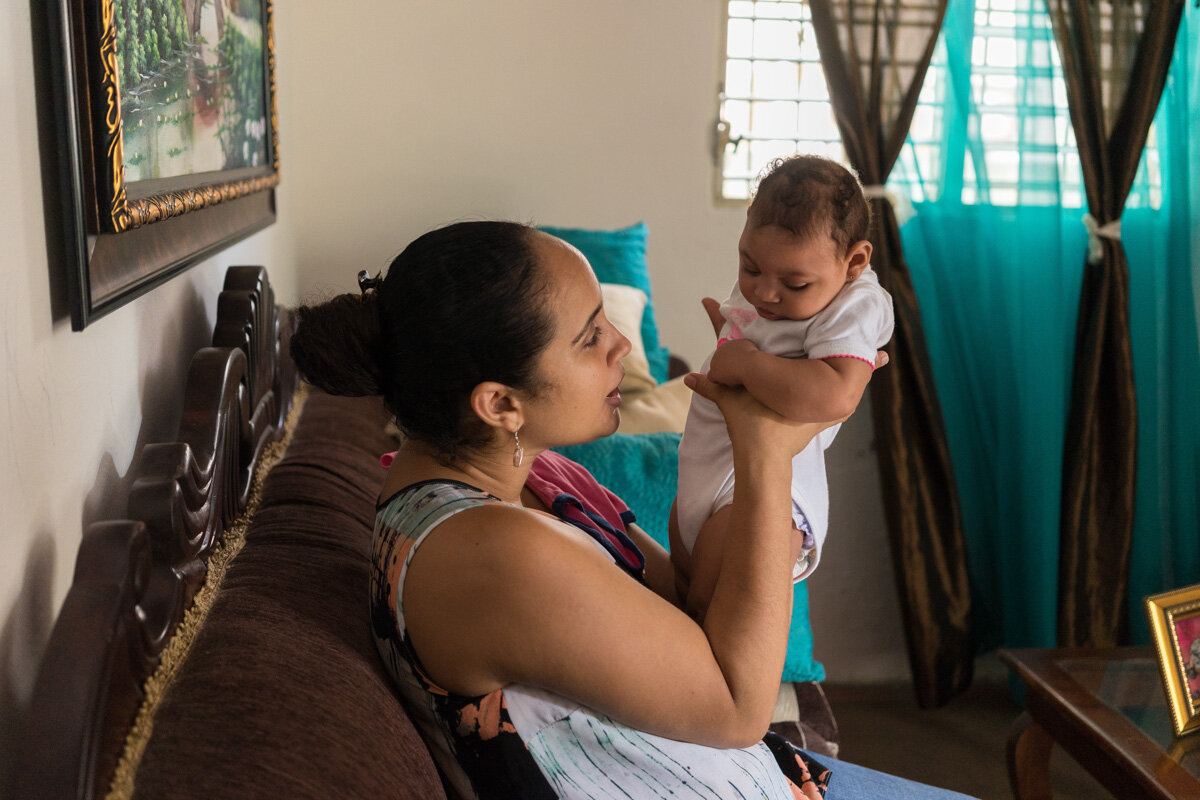
USAID DR - Arianny and Teanny
June 27, 2017 - San Cristóbal (Dominican Republic). Arianny Polanco feeds her daughter Teanny in their house in San Cristóbal. Arianny was diagnosed with Zika while pregnant with her daughter, Teanny, who was born with Microcephaly, a birth defect linked with the virus. USAID is strengthening health services to prevent Zika and provide care and support to affected families. By working in Latin America and the Caribbean to control the spread of Zika, USAID is helping reduce travel-related infections and keeping citizens in the United States safe and healthy. © Thomas Cristofoletti / RUOM for USAID
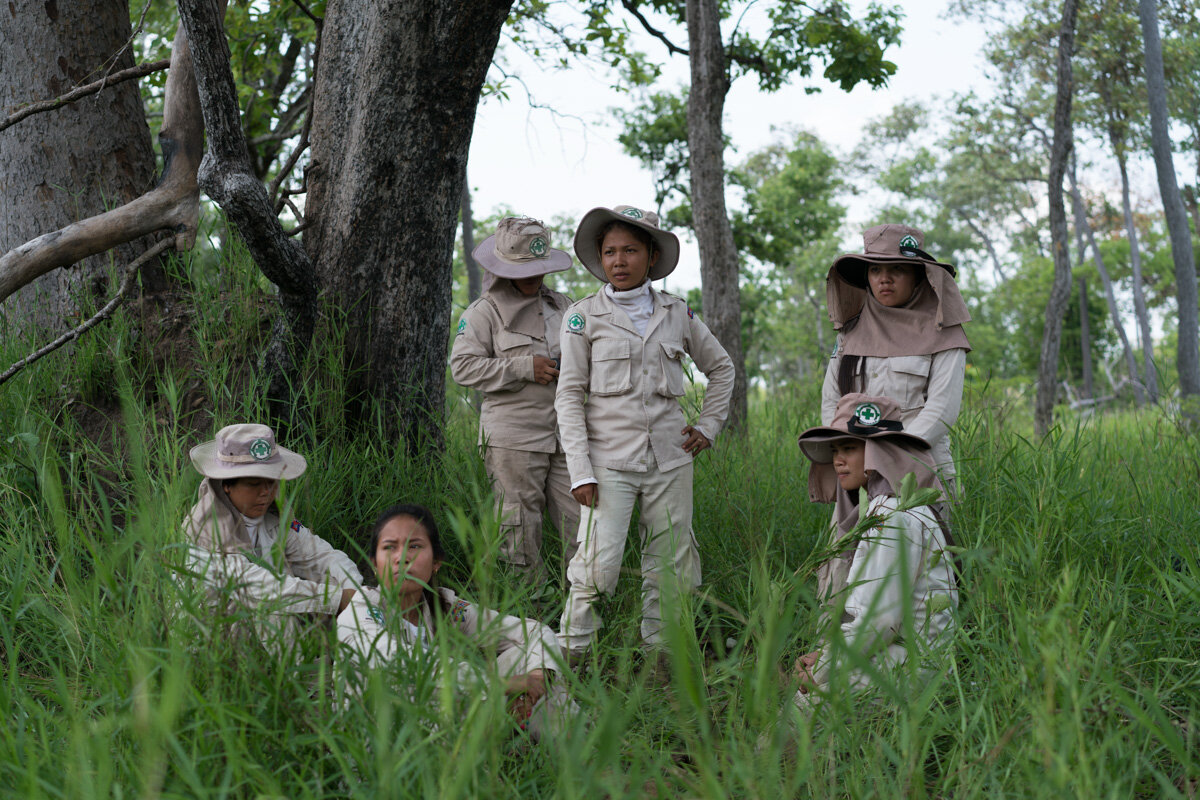
NPA's female UXO clearing team
April 27, 2017 - Banlung (Cambodia). The team takes a break between tasks. Most of the women are indigenous minorities from Ratanakiri province. © Thomas Cristofoletti / Ruom
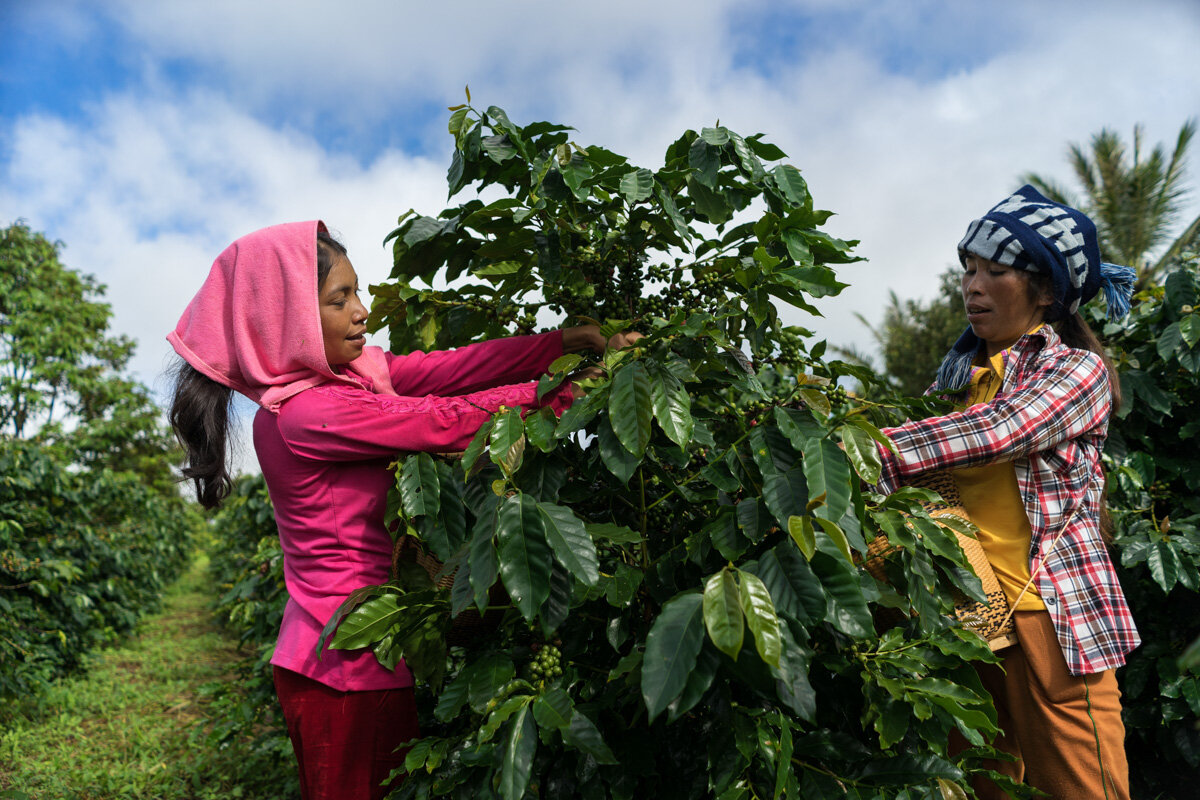
USAID Cambodia - Nanda
September 27, 2016 - Mondulkiri (Cambodia). Nanda Pok harvests coffee together with some indigenous women and Phalla, the owner of the plantation. Nanda is not only the owner of her own successful business in Cambodia but she also keeps herself busy by grooming other women to start their own businesses. She believes that when women are economically-empowered, money flows back into businesses and towards the health, education and wellbeing of families. She says, “When women become independent financially, they make their own decisions and they can stand on their own two feet without fear, without intimidation, and they are brave in making decisions for themselves for the children, for the family and for the whole society.” Nanda participated in a USAID funded coffee production training program for female business leaders from Southeast Asia. She then passed her learnings to other women entrepreneurs in her country, helping them to start their own businesses. She stands on the idea that women leaders should inspire the younger generation to become more productive. The training was apart of the GREAT Women (Gender Responsive Economic Actions for the Transformation of Women) initiative, organized by the USAID funded ASEAN Connectivity through Trade and Investment (ACTI) program. © Thomas Cristofoletti / Ruom for USAID
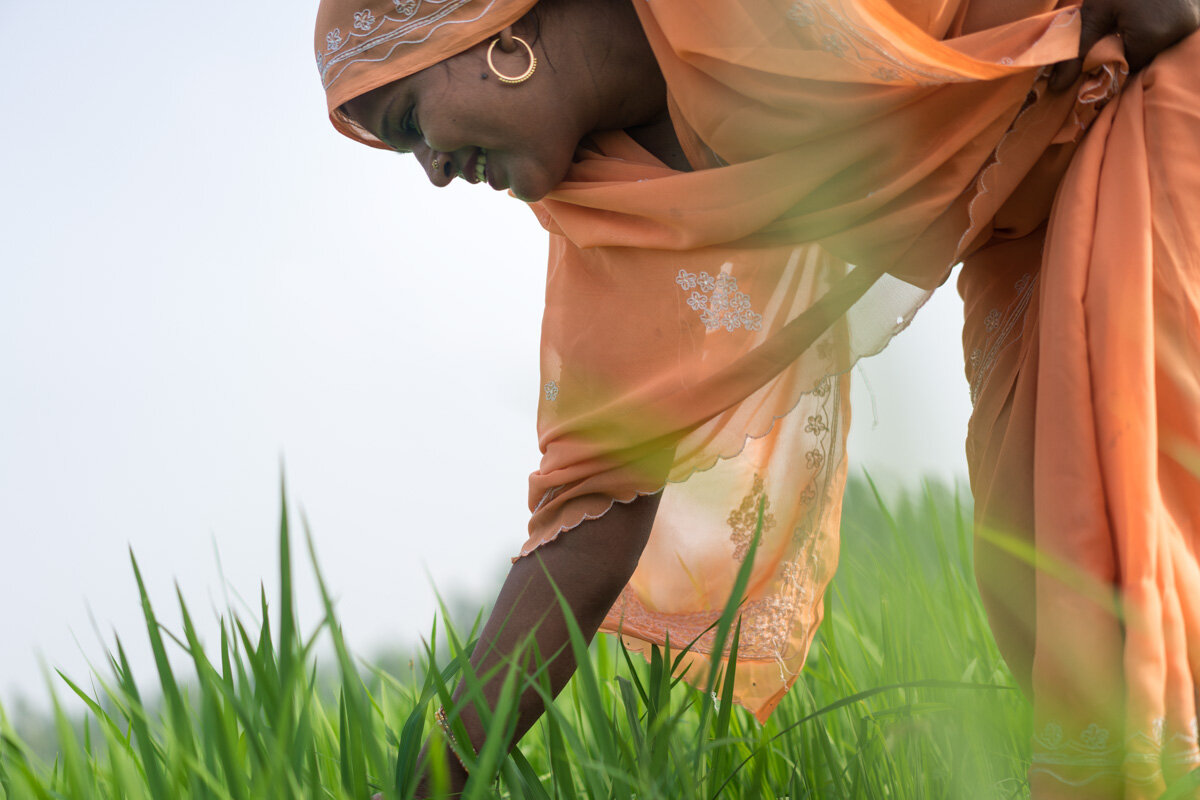
WWF-UK - Tara
July 19, 2016 - Moradabad (India). Tara pulls weeds from her rice field. She's one of the farmers in her community who decided to test a new variety of flood resistent rice. The rice has been tested in India and Bangladesh and can survive up to two weeks of completesubmergence in water, providing farmers with protection against short-term flooding. © Thomas Cristofoletti / Ruom for WWF-UK
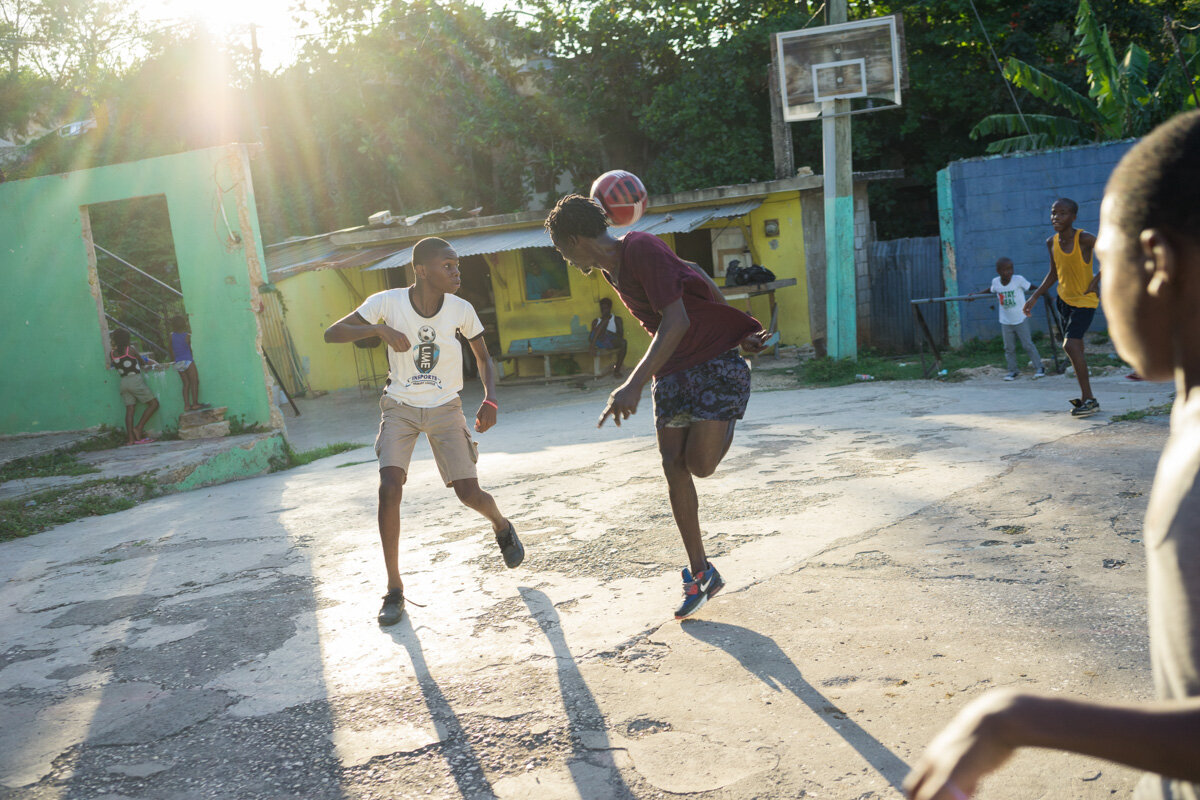
USAID Jamaica - Ruben, Violence Interrupter
MONTEGO BAY, JAMAICA, MAY 11, 2016 - Ruben Robinson plays soccer with some of the kids of his neighborhood. Robinson is a 36-year-old community activist from the Canterbury neighborhood of Montego Bay, Jamaica - one of the most violent communities in the Western Hemisphere. Ruben got into gang life from an early age, pushed, he says, by poverty and a difficult home life. “When I was 9 I started smoking weed. When I was 13 I started using guns,” he says. “Things got so wild, we started killing just to earn our money.” As he grew older, Robinson became a notorious Canterbury criminal and spent time in jail. Though Robinson long wanted to leave gang life, his turning point came in 2013 when he was approached to participate in a program supported by the Government of Jamaica to engages at-risk youth with positive and productive activities rather than illicit ones. He soon after became a violence interrupter, working with members of his community to prevent criminal activity. Violence interrupters are often the first line of defense in high-crime neighbors. They are chosen because they have the credibility needed to affect change. USAID helped develop the community-based policing program in Jamaica and has worked with Jamaican authorities to pilot it as part of its Caribbean Basin Security Initiative. It is based on a successful Chicago model that is used in several American cities to combat crime.
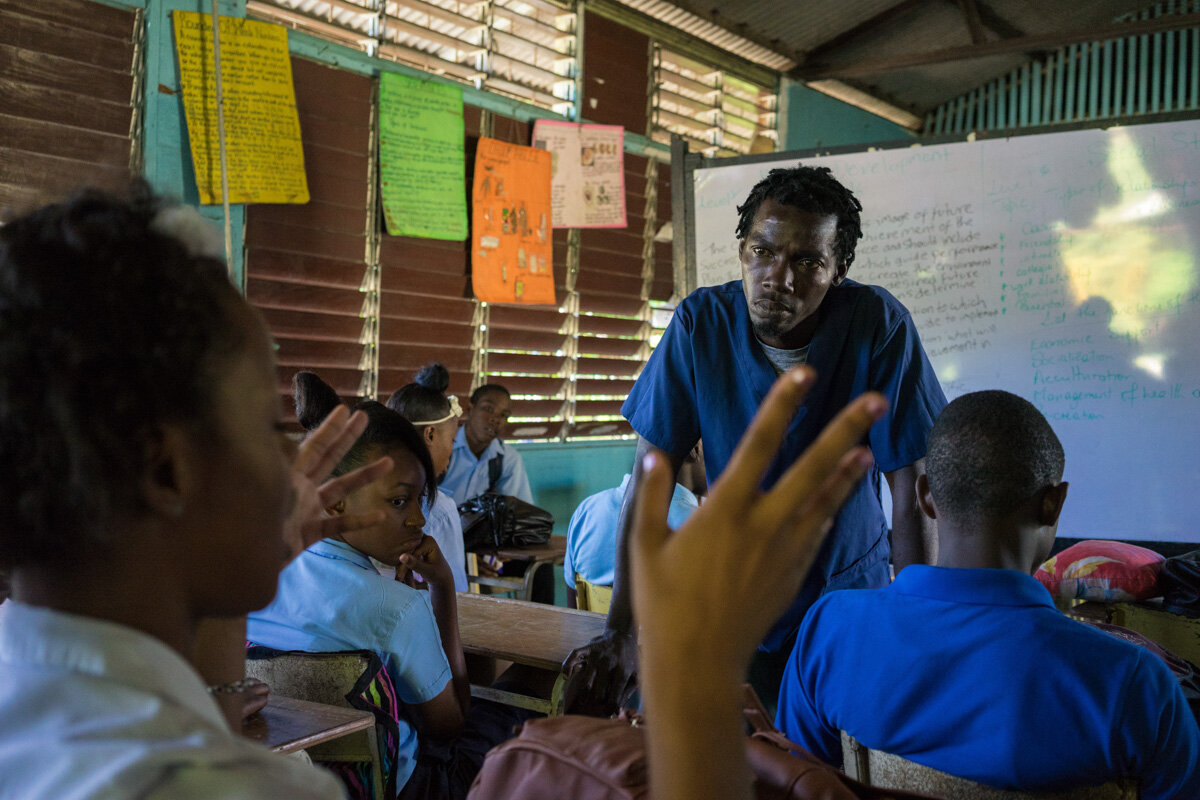
USAID Jamaica - Ruben, Violence Interrupter
MONTEGO BAY, JAMAICA, MAY 11, 2016 - Ruben Robinson reaches out a group of youth attending a governamental school. Robinson is a 36-year-old community activist from the Canterbury neighborhood of Montego Bay, Jamaica - one of the most violent communities in the Western Hemisphere. Ruben got into gang life from an early age, pushed, he says, by poverty and a difficult home life. “When I was 9 I started smoking weed. When I was 13 I started using guns,” he says. “Things got so wild, we started killing just to earn our money.” As he grew older, Robinson became a notorious Canterbury criminal and spent time in jail. Though Robinson long wanted to leave gang life, his turning point came in 2013 when he was approached to participate in a program supported by the Government of Jamaica to engages at-risk youth with positive and productive activities rather than illicit ones. He soon after became a violence interrupter, working with members of his community to prevent criminal activity. Violence interrupters are often the first line of defense in high-crime neighbors. They are chosen because they have the credibility needed to affect change. USAID helped develop the community-based policing program in Jamaica and has worked with Jamaican authorities to pilot it as part of its Caribbean Basin Security Initiative. It is based on a successful Chicago model that is used in several American cities to combat crime.

USAID Jamaica - Ruben, Violence Interrupter
MONTEGO BAY, JAMAICA, MAY 11, 2016 - Ruben Robinson poses for a portrait. Robinson is a 36-year-old community activist from the Canterbury neighborhood of Montego Bay, Jamaica - one of the most violent communities in the Western Hemisphere. Ruben got into gang life from an early age, pushed, he says, by poverty and a difficult home life. “When I was 9 I started smoking weed. When I was 13 I started using guns,” he says. “Things got so wild, we started killing just to earn our money.” As he grew older, Robinson became a notorious Canterbury criminal and spent time in jail. Though Robinson long wanted to leave gang life, his turning point came in 2013 when he was approached to participate in a program supported by the Government of Jamaica to engages at-risk youth with positive and productive activities rather than illicit ones. He soon after became a violence interrupter, working with members of his community to prevent criminal activity. Violence interrupters are often the first line of defense in high-crime neighbors. They are chosen because they have the credibility needed to affect change. USAID helped develop the community-based policing program in Jamaica and has worked with Jamaican authorities to pilot it as part of its Caribbean Basin Security Initiative. It is based on a successful Chicago model that is used in several American cities to combat crime.

USAID DR - Isobel
May 05, 2016 - Santo Domingo (Dominican Republic). Isobel Báez plays with her daughter. Isobel is a 23-year- old young woman from Los Alcarrizos in Santo Domingo, Dominican Republic. After getting pregnant with her daughter at the age of 17, she dropped out of school due to her fear of being bullied. Isobel has always lived a life stricken by poverty that has affected both her as a child and her own children today. “I often went hungry as a child because I helped my dad work”. My parents never noticed but yes it is true,” She says. Her youngest son had to be sent to live with her mother because she didn’t have enough money to take care of two children on her own. Isobel wanted to do better for her children so she decided to take her life back and take classes at a USAID supported center for at-risk youth. It was there she learned how to make her own shampoo and sell it around her neighborhood. Isobel hopes to one day open her own shop to teach others like herself how to make hair products and candles. The USAID at-risk youth program, funded under the Caribbean Basin Security Initiative, has the objective to create a sustainable multidisciplinary safety net for at-risk youth between the ages of 11 and 24 to prevent crime. Isobel’s life has changed because of the opportunities that USAID has given her and she wants the world to know that even people from poor neighborhoods can make it. © Thomas Cristofoletti / Ruom for USAID

USAID DR - Isobel
May 04, 2016 - Santo Domingo (Dominican Republic). Isobel Báez during a class at the center for at-risk youth she attends. Isobel is a 23-year- old young woman from Los Alcarrizos in Santo Domingo, Dominican Republic. After getting pregnant with her daughter at the age of 17, she dropped out of school due to her fear of being bullied. Isobel has always lived a life stricken by poverty that has affected both her as a child and her own children today. “I often went hungry as a child because I helped my dad work”. My parents never noticed but yes it is true,” She says. Her youngest son had to be sent to live with her mother because she didn’t have enough money to take care of two children on her own. Isobel wanted to do better for her children so she decided to take her life back and take classes at a USAID supported center for at-risk youth. It was there she learned how to make her own shampoo and sell it around her neighborhood. Isobel hopes to one day open her own shop to teach others like herself how to make hair products and candles. The USAID at-risk youth program, funded under the Caribbean Basin Security Initiative, has the objective to create a sustainable multidisciplinary safety net for at-risk youth between the ages of 11 and 24 to prevent crime. Isobel’s life has changed because of the opportunities that USAID has given her and she wants the world to know that even people from poor neighborhoods can make it. © Thomas Cristofoletti / Ruom for USAID
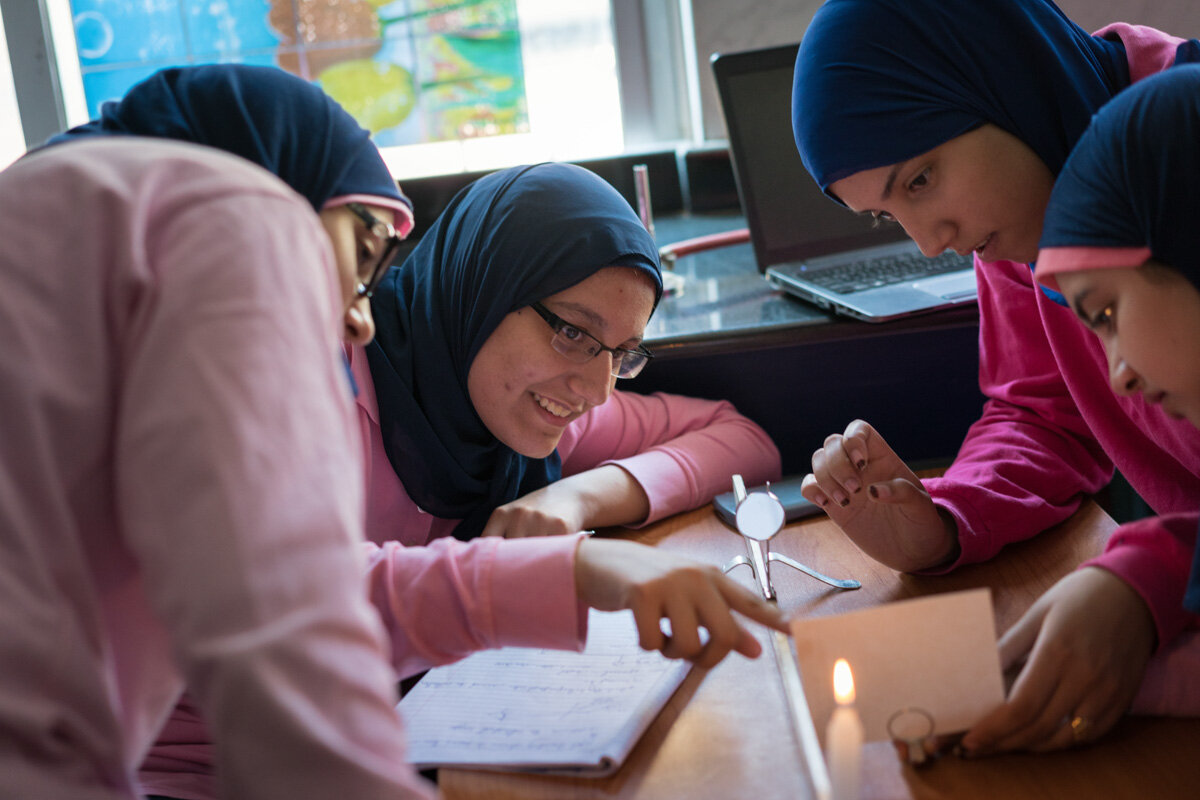
Let Girls learn - STEM School Egypt
CAIRO, EGYPT, October 11, 2015. High school students Azza [left], Nada [upper right] and Nourhan [lower right] attend a class at the USAID-supported Maadi STEM School for Girls in Cairo, Egypt. These students are part of an elite class of just 120 who apply and are admitted to the school each year. In every region of the world, women and girls are underrepresented in science, technology, engineering and math, denying them opportunities in education, entrepreneurship and finance that could help break the cycle of poverty. The worldwide average for women’s representation in these fields is only 30%, and women in developing countries are 25% less likely to be online than men. Science and technology play a critical role in spurring innovation and achieving sustainable development. But for science, technology and innovation to accelerate progress, they must be available to everyone. They have the power to create connections, foster learning, increase economic growth, and provide lifesaving information. Science and technology can also help change social norms and stereotypes, and reduce inequality.In 2009, President Barack Obama announced his vision for new engagement with the Muslim world, including the advancement of science and technology. USAID answered the call by introducing STEM public education to Egypt. By 2015, USAID had helped establish nine state-of-the-art STEM schools across the country. STEM education is now a top priority for Egypt’s President Abdel El Sisi, with the Government of Egypt planning to eventually have one STEM school in each of its 27 governorates. Through the Let Girls Learn Initiative, USAID is reducing barriers to adolescent girls’ education and empowering them through new skills and leadership opportunities.
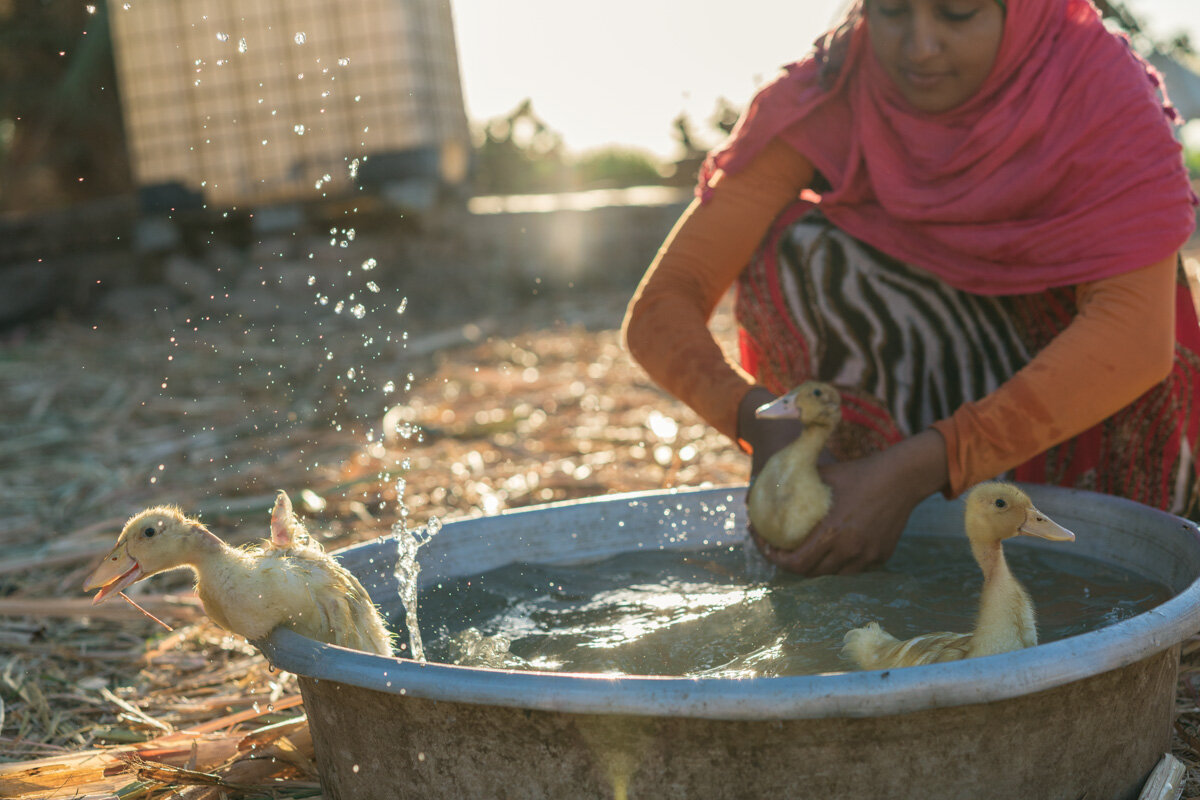
Doaa - the duck girl
October 8, 2015 - Esna (Egypt). Doaa Mohamed Bakr is an 18-year-old high school student with a big heart for animals. In July 2015, she was among 92 students to win a USAID-sponsored entrepreneurship competition hosted at 10 agricultural technical schools across all of southern Egypt. She won nearly $200 in startup capital, which she used to buy 140 ducklings. And with that, Doaa became the owner of her very own duck farming business. “When I first bought my ducks, at the beginning of the project, I was very very excited about them and fell in love with them,” Doaa says. “Everyday I would feed them, cut them clover, make them swim and sleep, talk to them, and loved them like my kids that I don’t even have.” USAID supports technical high school education in Egypt and encourages entrepreneurship as part of a strategy to boost economic growth by increasing productivity and employability of Egypt’s youth.
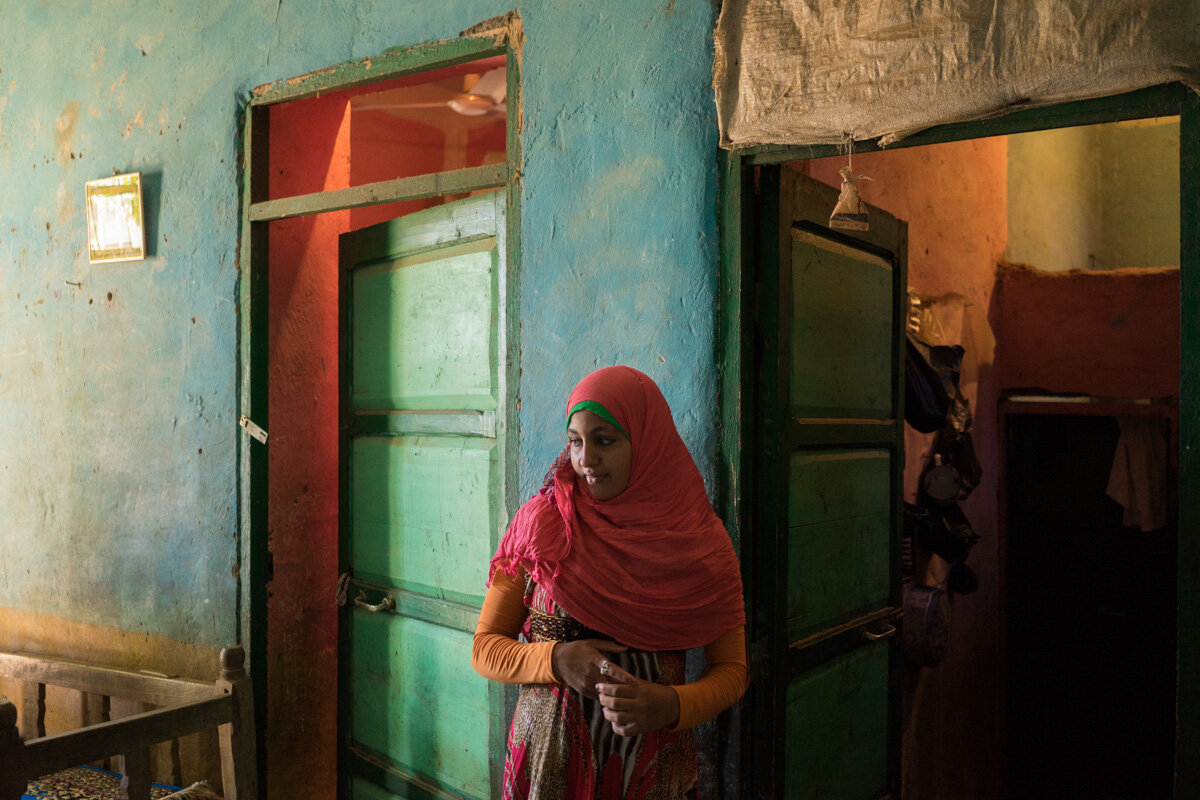
Doaa - the duck girl
October 8, 2015 - Esna (Egypt). Eighteen-year-old Doaa Mohamed Bakr is one of the first female entrepreneurs her village has ever known. In July 2015, she was among 92 high school students from all over southern Egypt to win a USAID-sponsored entrepreneurship competition. Doaa bought 140 ducklings with nearly $200 in startup capital awarded through the competition. And with that, she became the owner of her very own duck farming business. “My dream is to expand this project, and have a big barn,” Doaa says, “My advice and message to girls my age is that they should start with this project. You’ll become a great business woman and make your dad and mum proud.” Doaa’s high school is one of 10 agricultural technical schools that USAID supports as part of a strategy to boost economic growth by increasing productivity and employability of Egypt’s youth.
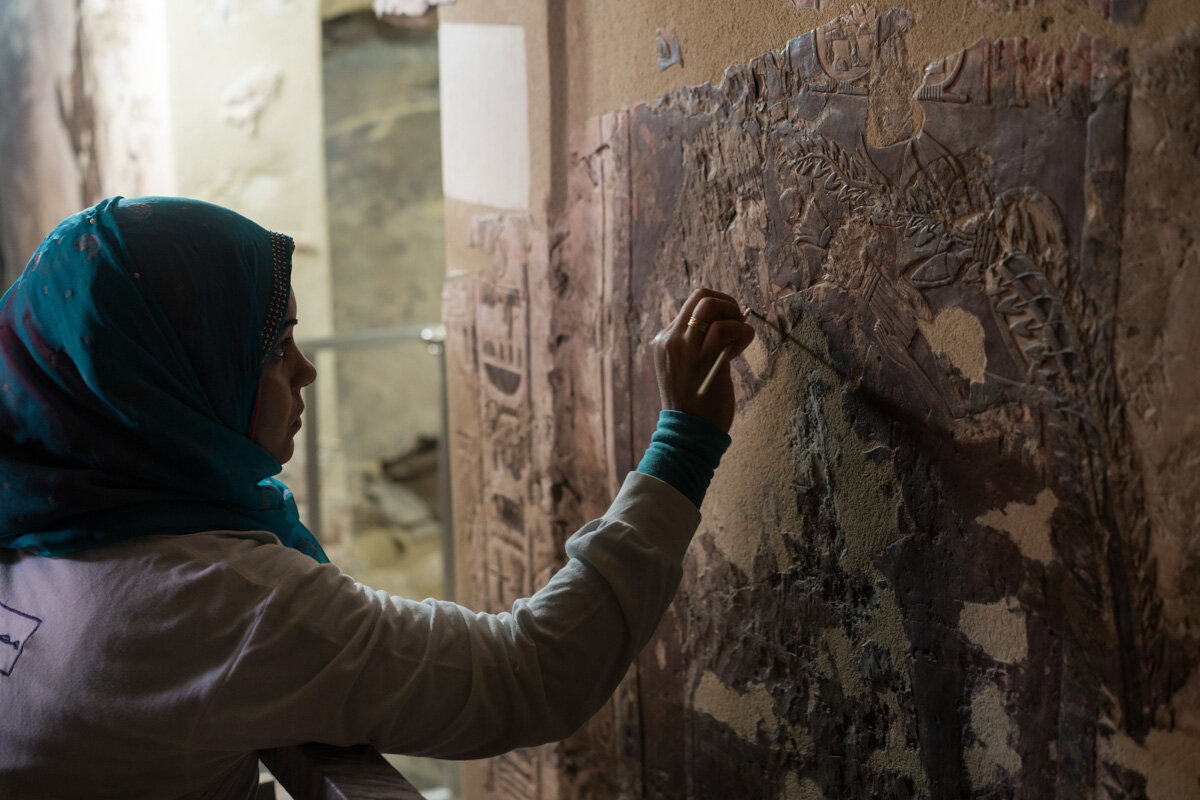
USAID Egypt - Luxor conservation
LUXOR, EGYPT - OCTOBER 5, 2015. Asmaa is a third-year student working on a tomb in Luxor’s Valley of the Nobles. Trained through a USAID project with American Research Center in Egypt, or ARCE, Asmaa uses distilled water to remove soot from the 18th Dynasty tomb, which dates to roughly the 1300’s B.C., or 3,300 years ago. USAID’s grant to ARCE includes support for conservation, restoration and documentation of Egyptian heritage sites along with training of Egyptian Government staff.
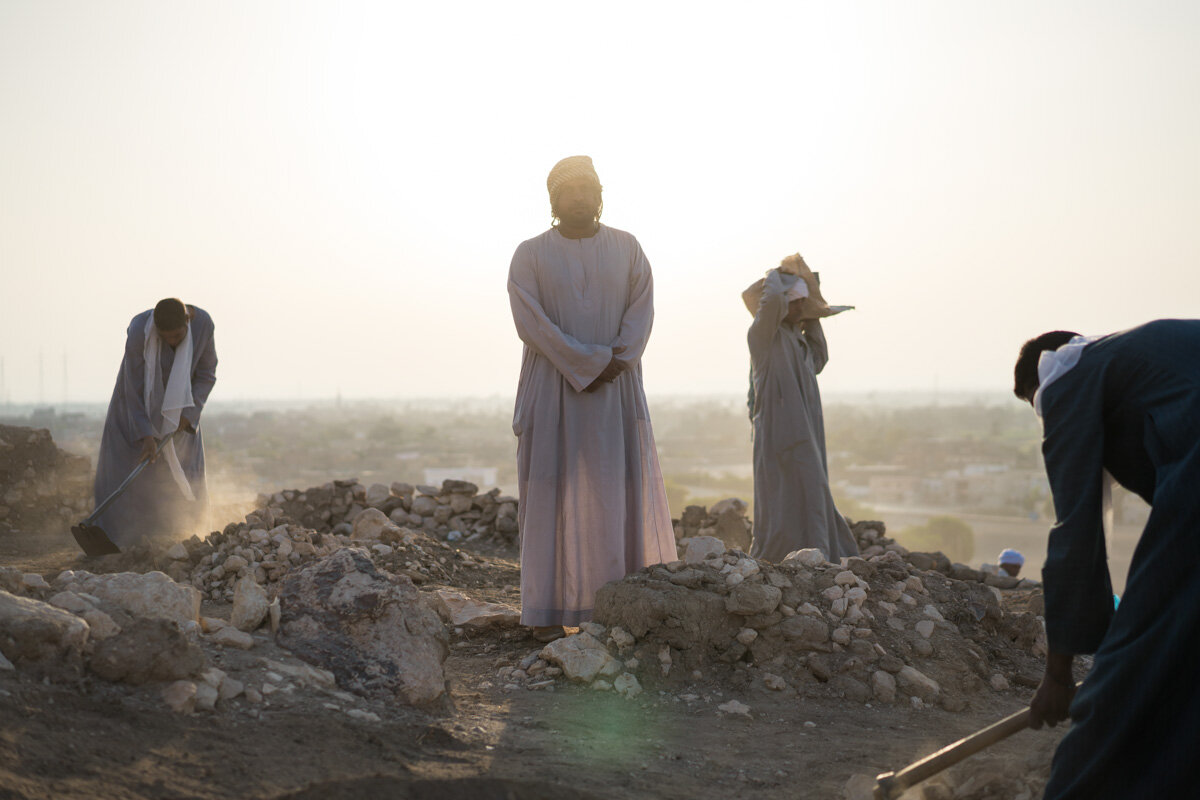
LUXOR, EGYPT - OCTOBER 6, 2015. For eight years—until the tourist downturn following the January 25 Revolution in 2011—Ahmed Mohamed Mahmoud Hassan worked as a chef at local restaurants. But today, he supports his wife and two children as a day laborer at the Qurna archeological dig site on the West Bank of the Nile. “It’s tough work, but I have adjusted my lifestyle,” he says. The site was also home to modern Egyptians for over a century until 2007, when the Government of Egypt - in an effort to preserve the tombs - began resettling Qurna residents to nearby villages. As part of a USAID project to preserve Egypt’s cultural heritage while also boosting the local economy, the American Research Center in Egypt, or ARCE, has hired more than 500 local villagers to remove rubble left from the demolition and improve the site for official tourism. Before 2011, Luxor had a thriving tourism industry, with thousands of visitors every day combing through Luxor’s ancient temples. Now only a few hundred make the visit.
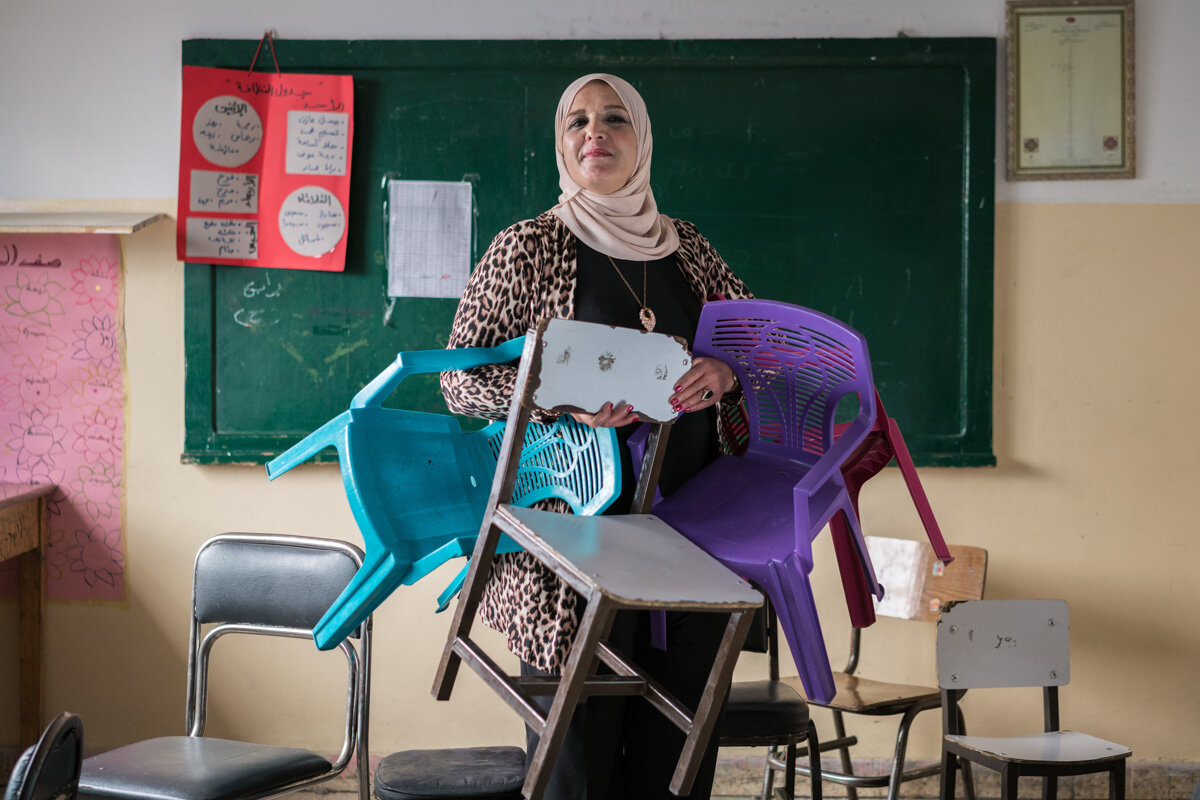
AMMAN, JORDAN - OCTOBER 1, 2015: Maha al Ashqar is the principal of Khawla Bint Tha’laba Primary Girls School in a suburb of Amman Jordan. The school, which has 356 students, hosts around 65 Syrian students—many of whom have fled violence and destruction in their country to live as refugees in Jordan. Although her school struggles with overcrowding, Al Ashqar is committed to accepting students. She also recounts this powerful anecdote: A few months after school started this year, a Syrian mother arrived at the front gates asking to enroll her daughter. The women at reception apologized, “There is no way. This school is full.” The mother was crestfallen. She asked to see the principal and was directed to Al Ashqar. And as she has done so many times before, the principal told the mother that, of course, she would enroll her daughter. But she had one request, “Please bring a chair.” “This touched me,” Al Ashqar explains. “I saw the tears of many mothers, and it was impossible to tell them that we had no room, to try somewhere else. I told them, just bring a chair with you, even if it’s a small plastic chair, and we will make do.”Syria’s civil war has resulted in one of the worst humanitarian crises of our time—one that knows no borders. More than half of Syria’s pre-war population has fled their homes due to the violence. A generation of Syrian children has lost access to education and the ability to experience a normal childhood. Of those nearly 12 million people, more than 4 million Syrians have sought refuge in neighboring countries—over 628,000 of them in Jordan.
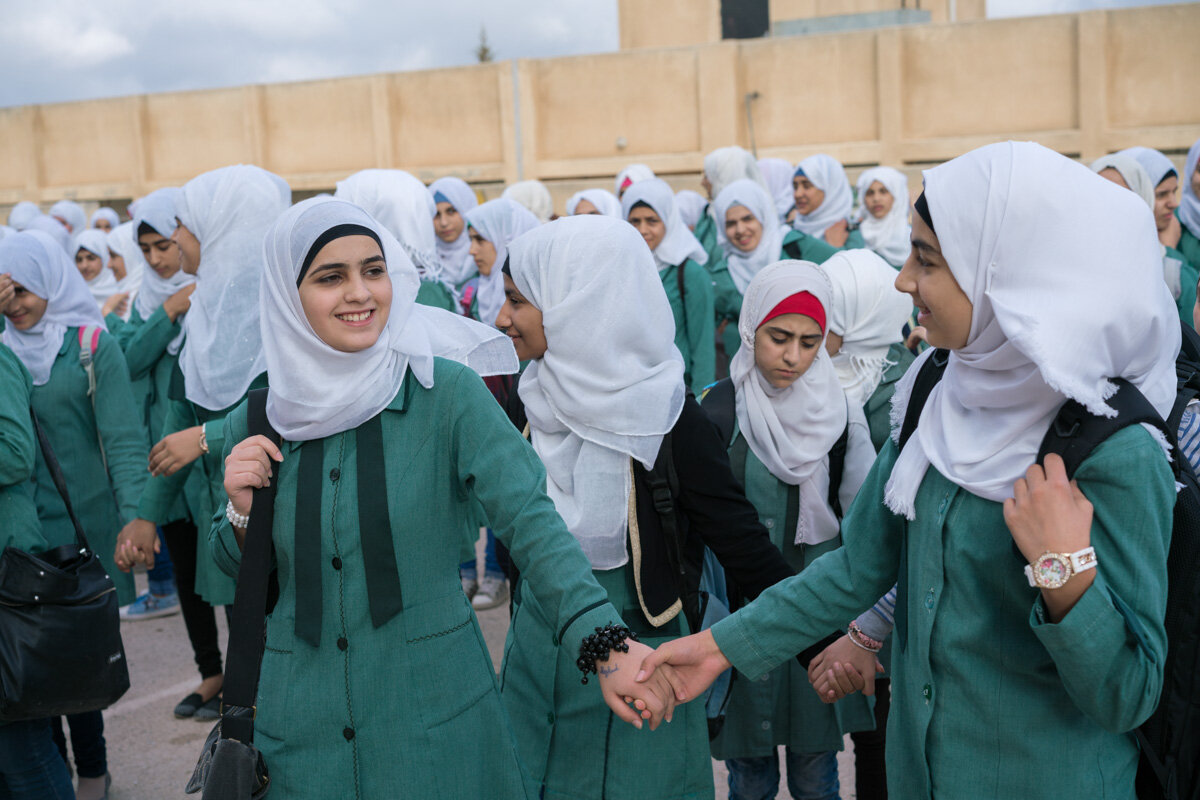
Let Girls Learn Jordan
AJLOUN, JORDAN, SEPTEMBER 29, 2015Raghad and Ghusun line up in the courtyard of the school and sing the Jordanian national anthem before starting lessons. In Syria, Raghad [right] used to sit in the first row at school. When she came to Jordan, she was determined not to change that. Raghad has a special relationship with her father. He helps her study and find new solutions to homework problems. It’s through him that she was able to excel in Arabic. They spend hours together talking about literature and poetry. Ghusun [left] loves helping people and hopes to make that a career by becoming a doctor one day. Still, she knows that you can’t always predict the future and admits that her ambitions may change one day. For now, she enjoys studying a range of subjects, especially English, and spending time with her best friend, Raghad. Both girls attend the Anjara Elementary School in Ajloun where USAID and the Jordanian NGO Queen Rania Teacher Academy train teachers on how to accommodate and integrate new students who have suffered unthinkable trauma and may need special counseling and care through the CISLE project. The CISLE project supports 340 schools across Jordan. Syria’s civil war has resulted in one of the worst humanitarian crises of our time – one that knows no borders. More than half of Syria’s pre-war population has fled their homes due to the violence. A generation of Syrian children has lost access to education and the ability to experience a normal childhood. Of those nearly 12 million people, more than 4 million Syrians have sought refuge in neighboring countries – over 628,000 of them in Jordan.
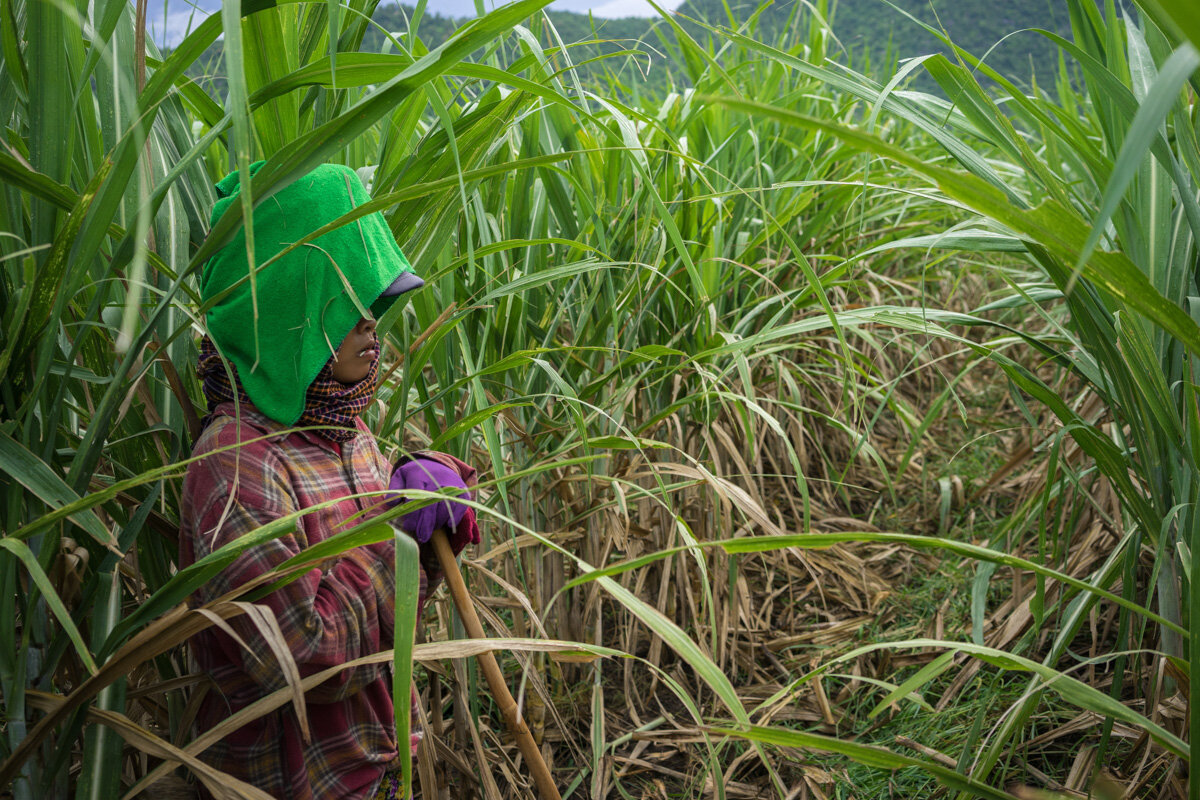
August 19, 2015 - Pis Village - Omlaing (Cambodia). Ms. Srey Khouch's daughter at work in the plantation. During the raining season, workers are paid less than 3 USD a day to clean and fertilize the sugar canes. © Thomas Cristofoletti / Ruom for OXFAM Australia

Dina's roadside bakery and restaurant
LLANO GRANDE, HONDURAS -- JULY 03, 2015: Dina Bila Dominguez Sanchez, 42 (left) poses together with her sister-in-law Nora Clementina Hernandez Manueles and her sister Claudia Francisca Dominguez Sanchez. At her roadside restaurant and bakery, Dina and her extended family make 280 pieces of bread a day, almost all of which are sold by evening. She has steadily expanded her business with the help of the USAID program ACCESO, part of the U.S. Government's Feed the Future initiative. The program lifts families out of poverty and malnutrition, helping more than 30,000 rural households in six departments in western Honduras since 2011 by expanding job opportunities and introducing better agricultural practices.
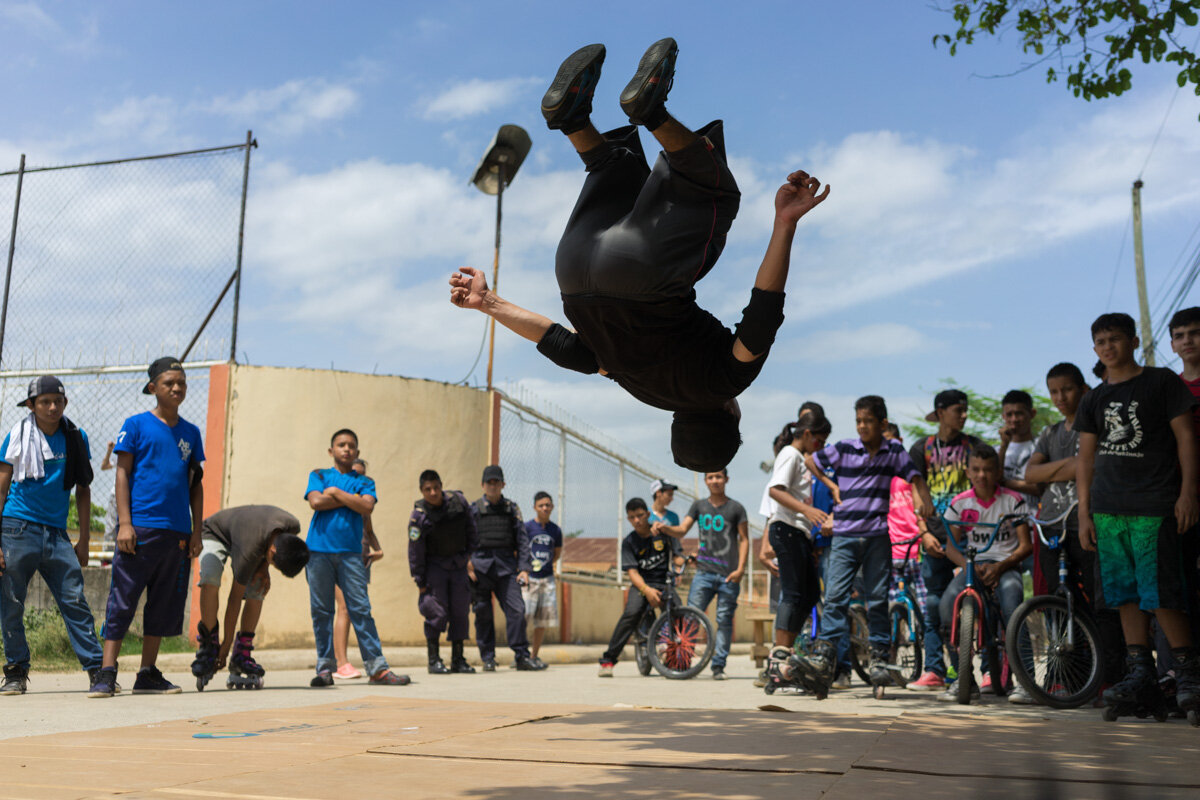
Jessel and the SkateBrothers
COFRADIA, HONDURAS -- JUNE 28, 2015: At a community street fair in Cofradia, a town in northwestern Honduras, there was a bouncy castle, BMX, skating and soccer. Members of the youth group Skate Brothers put on a performance, showing off their daring tricks. The group, which consists of about 50 kids who learn rollerblading, skateboarding, breakdancing and BMX, was founded out of a USAID youth outreach center to guide youth away from gangs and drugs.
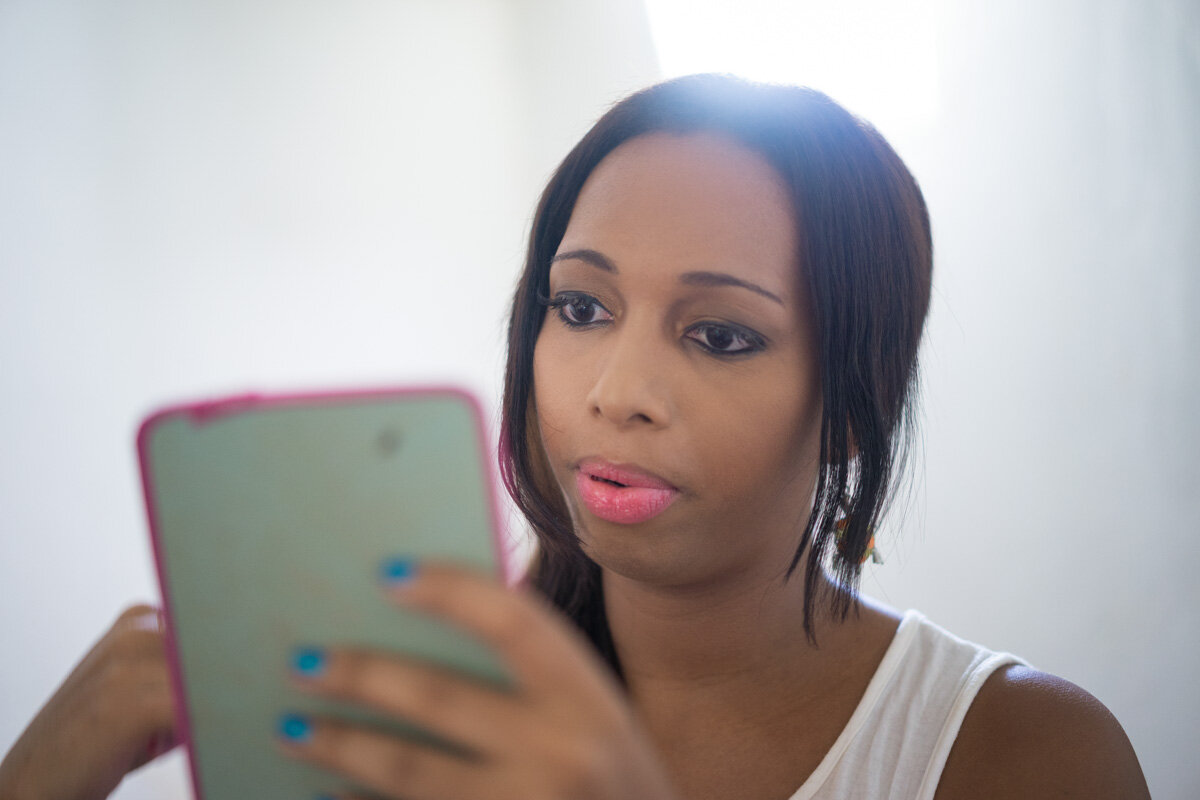
CARTAGENA, COLOMBIA - FEBRUARY 26, 2015: Tania Duarte, a 23-year-old philosophy student and trans activist for the LGBT rights group Caribe Afirmativo, gets dressed at her home in Cartagena, Colombia. Tania is the first trans person to study at Cartagena University. “This is a racist and machista city,” she explains. “We are still seen as sick, socially maladjusted, and with psychological problems. And this goes hand in hand with the stereotype that we can only be prostitutes or hairdressers.” When she is not studying, Duarte works for Caribe Afirmativo, which was founded in 2007 after the violent murder of the college professor and LGBT rights activist Rolando Peréz. The group documents cases of abuse against the LGBT population, trains law enforcement and policy officials on human rights, and fights so that those who commit crimes against LGBT persons are brought to justice. “The impact of Caribe Afirmativo is that before, here in Colombia’s Caribbean Coast, no one was talking about sexual diversity. No one was talking about gender identity. No one was talking about human rights reports. There were no data, there was no follow up. We were invisible people who, if we existed, only existed on TV,” says Duarte. Throughout Latin America and the Caribbean and around the world, USAID works side by side with groups like Caribe Afirmativo to support human rights and dignity.
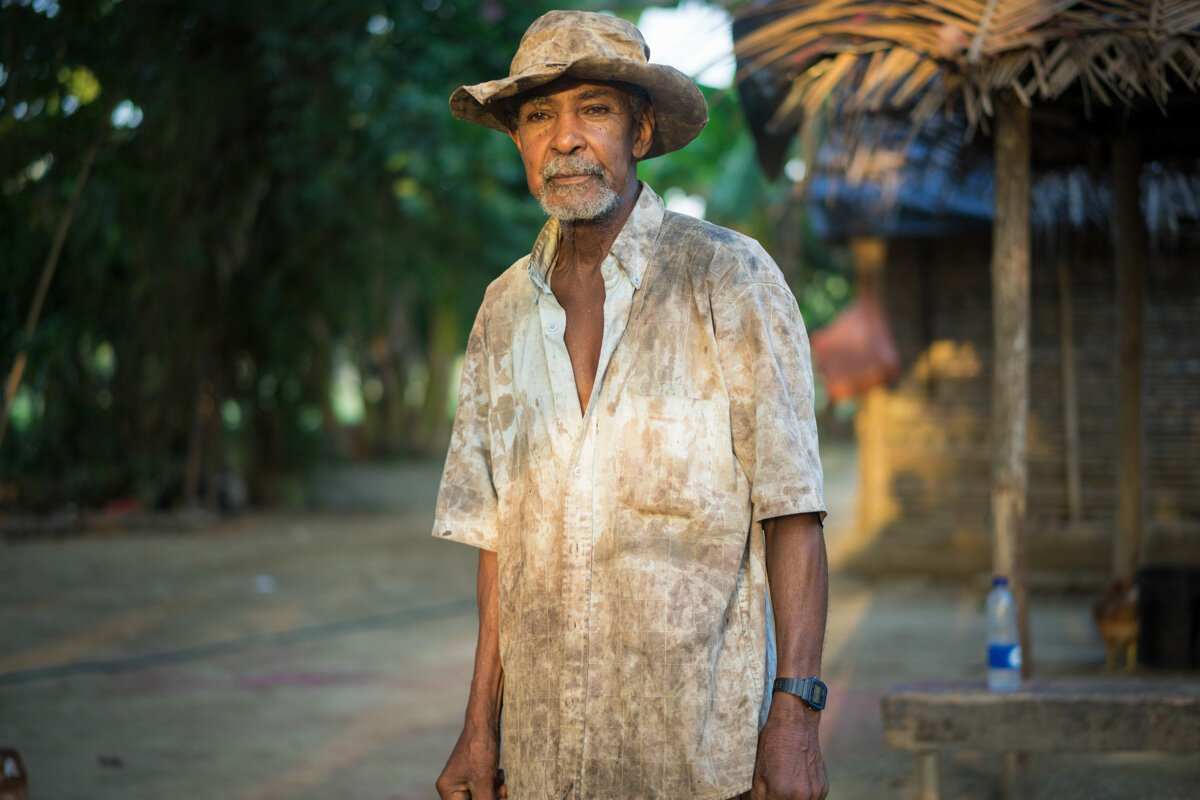
COLOMBIA - From coca to cacao
February 23, 2015: Isla de la Amargura, Caceres, Antioquia (Colombia): Jose Blanquiceth is a Colombian farmer living on a small island only reachable by motorboat. In this community of only 300 residents, Jose grows bananas and cacao in a small plot alongside his home, which he shares with his wife, son, daughter-in-law and three grandchildren. For the past five years, USAID has helped him grow better cacao and get a fairer price for his crop by connecting him to the chocolate industry. Jose is a beneficiary of a USAID program that aims to give farmers in coca-growing areas alternatives to the illegal drug trade – which is lucrative, but incredibly dangerous. Jose says that the cacao program helps him support his family. He can make around $300-$400 per month harvesting cacao and selling it to a local growers’ association. This group then pools product from several farmers and sells it to a major chocolate company based in Colombia. “With the cacao, now we can buy rice easier,” Jose explains. “Cacao changed my life.” Supporting the cacao industry is one of many USAID activities that gives Colombians living in areas long strained by civil conflict alternatives to illicit activities and helps rebuild trust in government and other institutions.
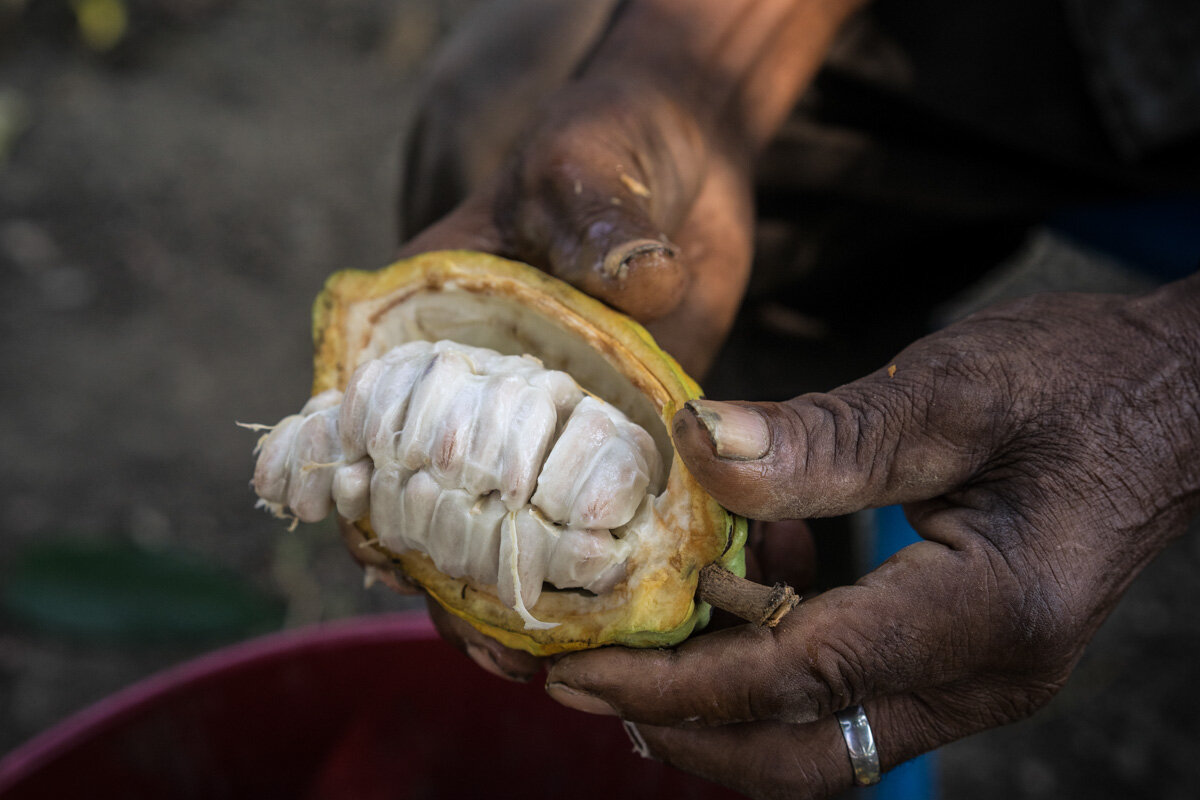
COLOMBIA - From coca to cacao
February 23, 2015: Isla de la Amargura, Caceres, Antioquia (Colombia). Jose Blanquiceth cuts the cocoa pods to extract the wet beans. Jose is a Colombian farmer living on a small island only reachable by motorboat. In this community of only 300 residents, Jose grows bananas and cacao in a small plot alongside his home, which he shares with his wife, son, daughter-in-law and three grandchildren. For the past five years, USAID has helped him grow better cacao and get a fairer price for his crop by connecting him to the chocolate industry. Jose is a beneficiary of a USAID program that aims to give farmers in coca-growing areas alternatives to the illegal drug trade – which is lucrative, but incredibly dangerous. Jose says that the cacao program helps him support his family. He can make around $300-$400 per month harvesting cacao and selling it to a local growers’ association. This group then pools product from several farmers and sells it to a major chocolate company based in Colombia. “With the cacao, now we can buy rice easier,” Jose explains. “Cacao changed my life.” Supporting the cacao industry is one of many USAID activities that gives Colombians living in areas long strained by civil conflict alternatives to illicit activities and helps rebuild trust in government and other institutions.
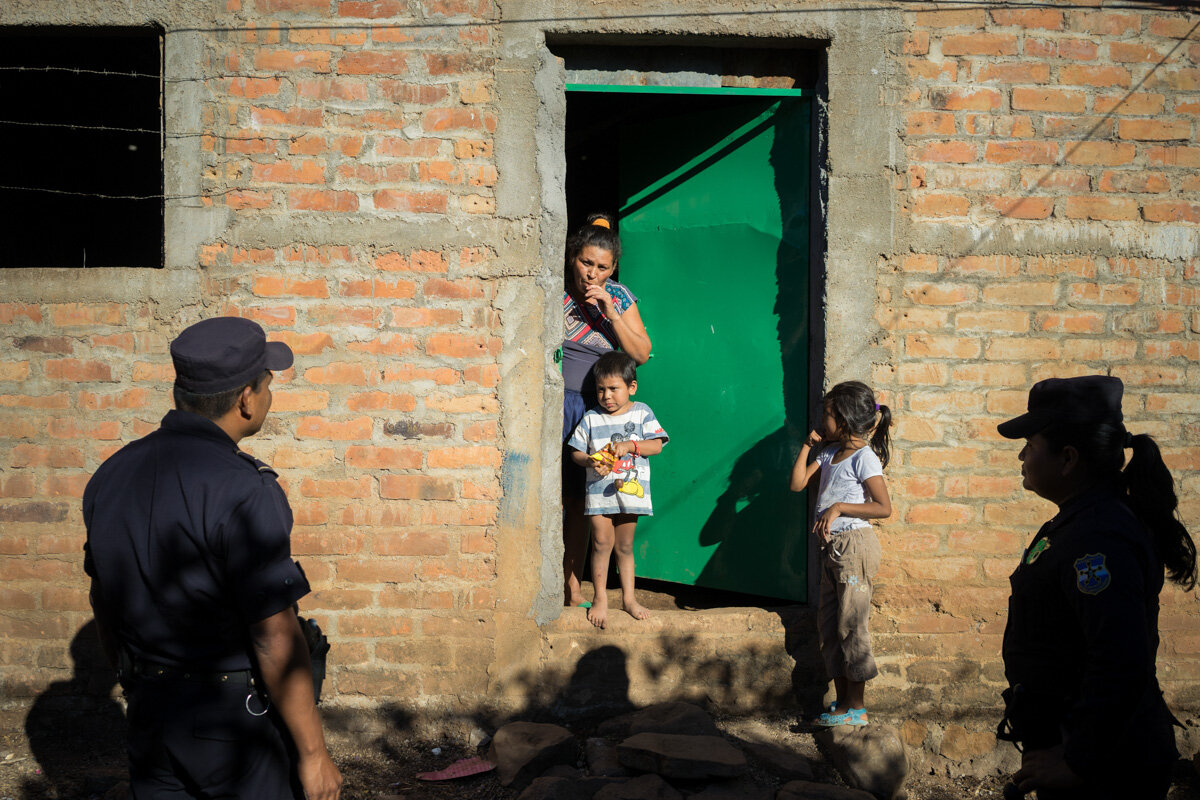
Kevin’s Story: Finding Peace in Ilobasco
ILOBASCO, EL SALVADOR - FEBRUARY 20, 2015: Police officers from the Violence Prevention Division during a patrol through the streets of Ilobasco. On these foot patrols, the officers will visit around 15 houses in an eight-hour shift, getting to know residents, explaining their efforts and attempting to earn their trust. USAID supports community policing in El Salvador as part of its efforts to reduce crime in one of the most violence-prone countries in the Western Hemisphere. “When we do the street patrols, we have a lot of contact with citizens. People tell us their problems. And we help them in whatever way we can,” says Hernández Reynosa. Community policing is a new tactic for El Salvador, where tensions run high between law enforcement and residents caught in the crosshairs of gang activity. In the areas where community policing has been implemented in pilot programs, murder and robbery rates decreased by around a third, while confidence in the police has risen.
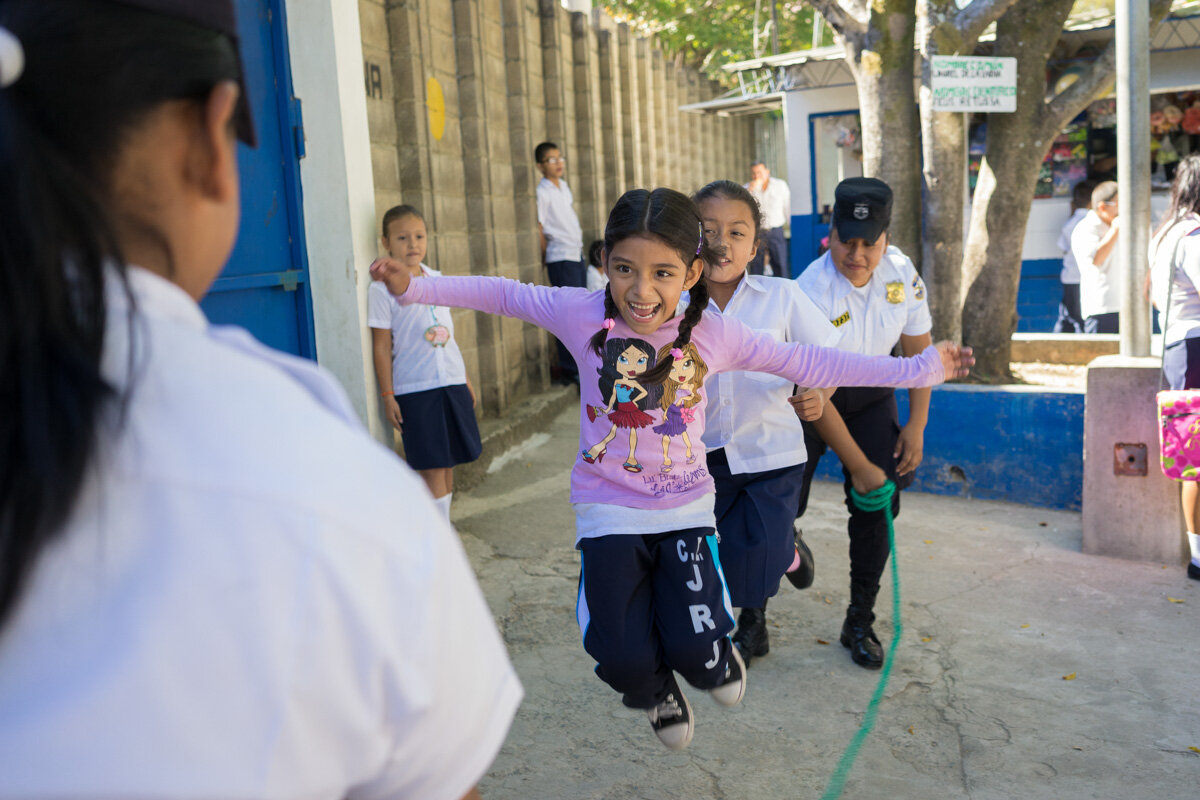
Kevin’s Story: Finding Peace in Ilobasco
ILOBASCO, EL SALVADOR - FEBRUARY 20, 2015: Police officer Sandra Elizabeth Hernández Reynosa plays with students at El Barreal school in Ilobasco, El Salvador. As a community police officer, Sandra works extensively with young people, making regular visits to the community’s schools, and even teaching summer school as part of a USAID-supported pilot program. “In the street, they will only find bad company. They are vulnerable,” she says. “It’s one of the reasons they join gangs.” Because Latin American and Caribbean youth are the main perpetrators of crime, USAID supports community policing programs that help to build trust between at-risk communities and law enforcement. “Kids are the future of our country,” says Hernández Reynosa. “If we start with them, I’m sure we will have a country free of of violence and without so much prejudice.”
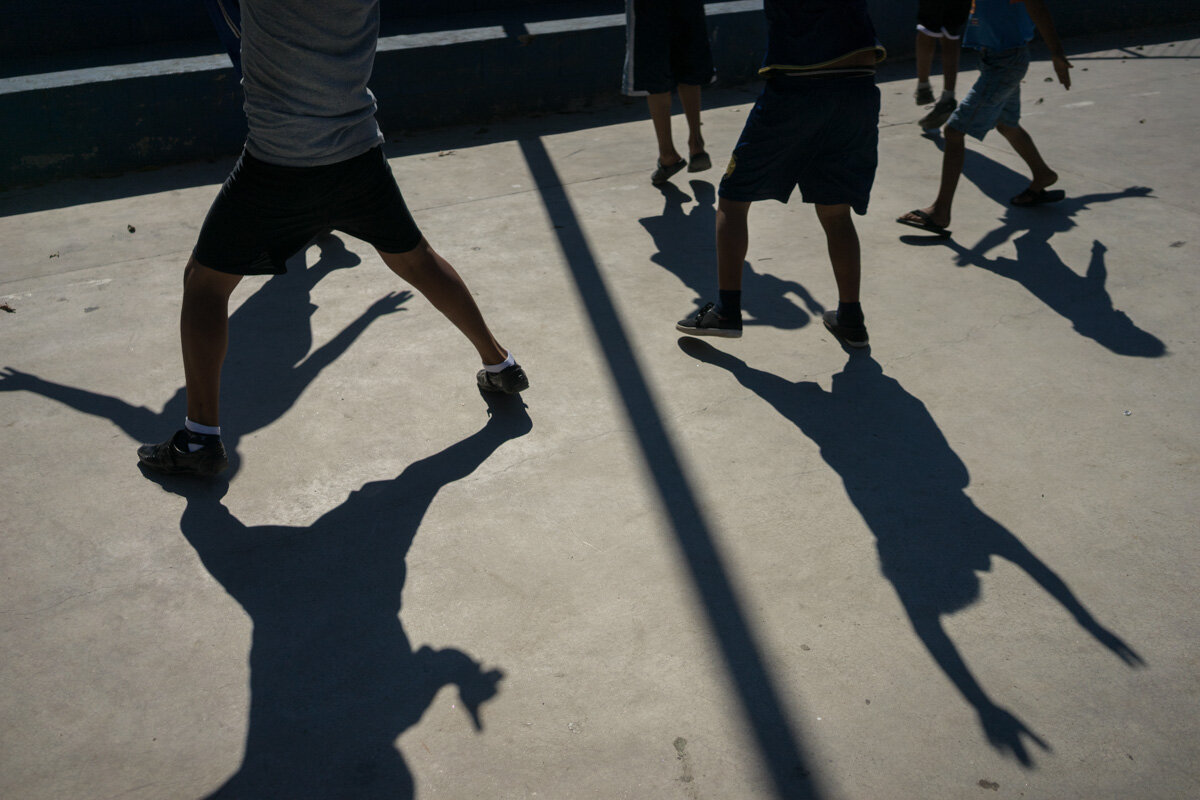
Kevin’s Story: Finding Peace in Ilobasco
ILOBASCO, EL SALVADOR - FEBRUARY 19, 2015: Children in Ilobasco, El Salvador practice soccer, one of several activities available to them at the USAID-supported Miranda Outreach Center where they can learn, play and socialize in a safe environment, away from the gang violence that plagues the community. “Soccer here, it’s very effective,” says Kevin, the center’s 17-year old volunteer soccer coach. “If kids were more involved in this maybe they would not be thinking about gangs and bad stuff.” Across El Salvador and Central America, USAID supports outreach centers as one way to address the insecurity and lack of options that can cause migrations to the United States, including a recent wave of around 50,000 minors who left in the summer of 2014. These centers give youth from Central America’s most violent communities a peaceful place to do homework, use the computer, study English or play sports.
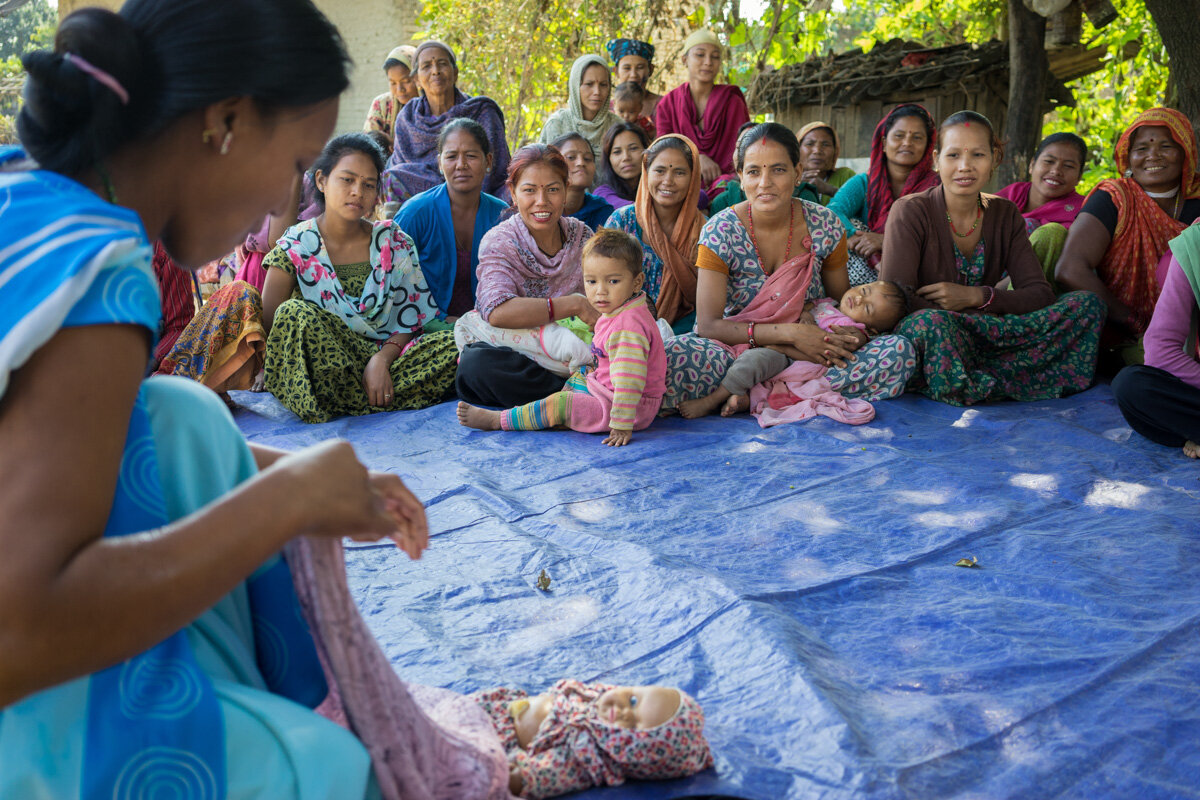
Jharana Kumari Tharu - female community health volunteer in Bina
November 19, 2013 - Binauna village, Banke (Nepal). Female Community Health Worker Jharana Kumari Tharu councils a group of women, including expectant mothers and those who have recently delivered, on good health practices in Binauna village, in Nepal’s Banke District. One of the many interventions that Jharana helps promote is how to apply a chlorahexidine-based antiseptic gel on a newborn’s cut umbilical cord stump to prevent infection. This simple life-saving intervention, which is supported by USAID and partner JSI throughout Nepal, has been shown to reduce infant mortality by roughly one third in a large community trial conducted in Nepal by the Johns Hopkins University Bloomberg School of Public Health in conjunction with partner organization Nepal Netra Jyoti Sangh.
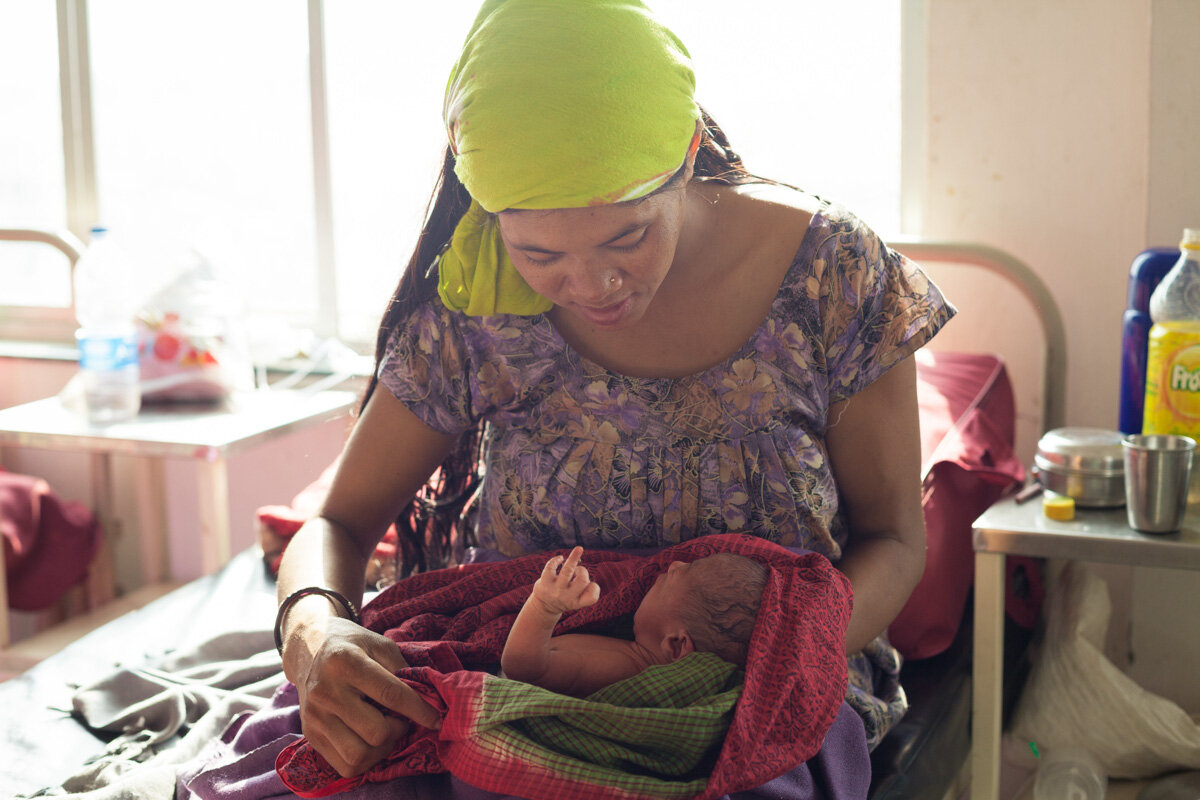
Nepalganj Medical College & Teaching Hospital
November 18, 2014 - Nepalganj (Nepal). A mother with her new born baby inside the post-natal ward at Nepal’s Nepalganj Medical College & Teaching Hospital.
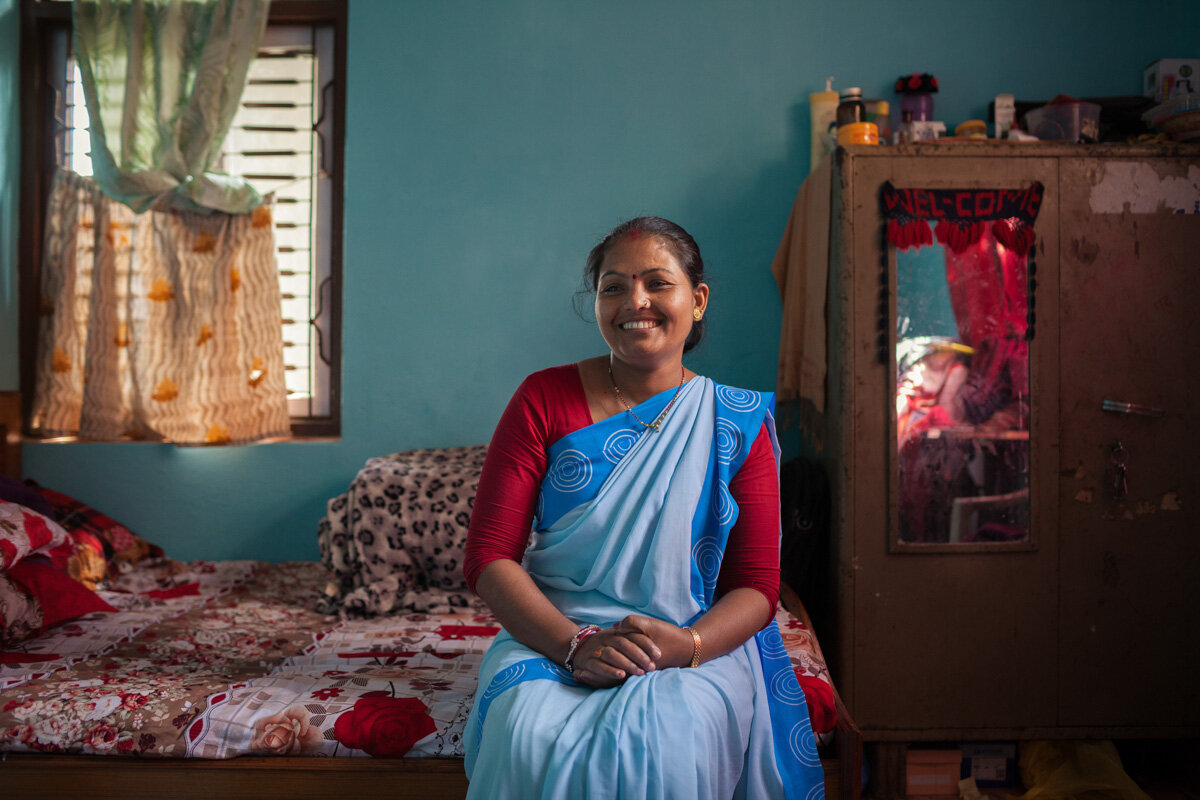
Gita Kunwar - Female Community Health Volunteer
November 17, 2014 - Ugratara village, Kathamandu (Nepal). Gita Kunwar is a 36-year-old Female Community Health Volunteer in Ugratara Janagall village, in the Kathmandu Valley. She is one of roughly 50,000 health volunteers tasked with encouraging better health behaviors among Nepal’s underserved populations, including expectant and new mothers. One of the most important behaviors that Gita helps promote is the use of a chlorahexidine antiseptic gel that is applied to the umbilical cords of newborns throughout the country after birth to prevent infection and newborn death. USAID has been a major supporter of every step of the chlorahexidine program over the past decade, from the early stage trials, conducted by Johns Hopkins University Bloomberg School of Public Health, and development, to the current scale-up across Nepal being implemented by JSI and the Nepal government Ministry of Health and Population.
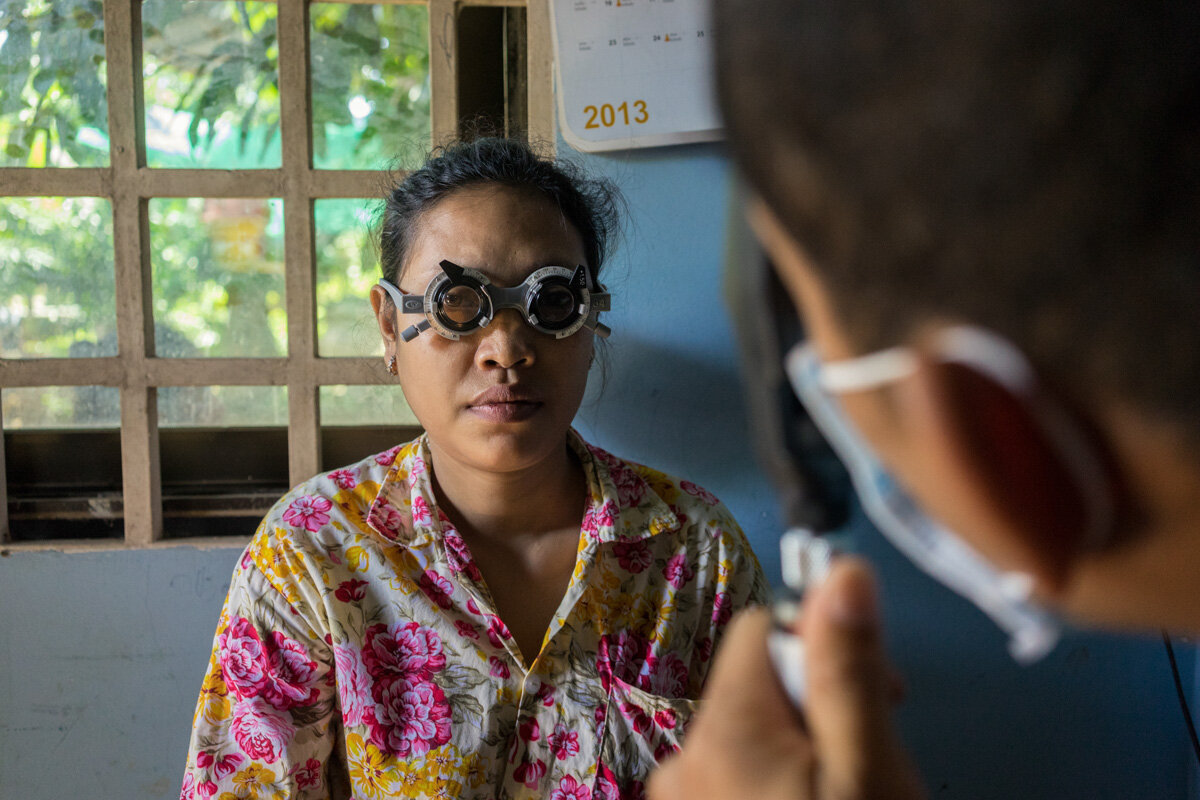
August 19, 2014 - Kandal (Cambodia). Amanda Vanstone (Vision 2020's Chair and previous Minister of Parliament), Jennifer Gersbeck (Vision 2020 Australia’s CEO) and David Andrews (RANZCO's CEO) visit an activity related to the Avoidable Blindness Initiative in a village in the outskirts of Phnom Penh. © Thomas Cristofoletti / Ruom for RANZO
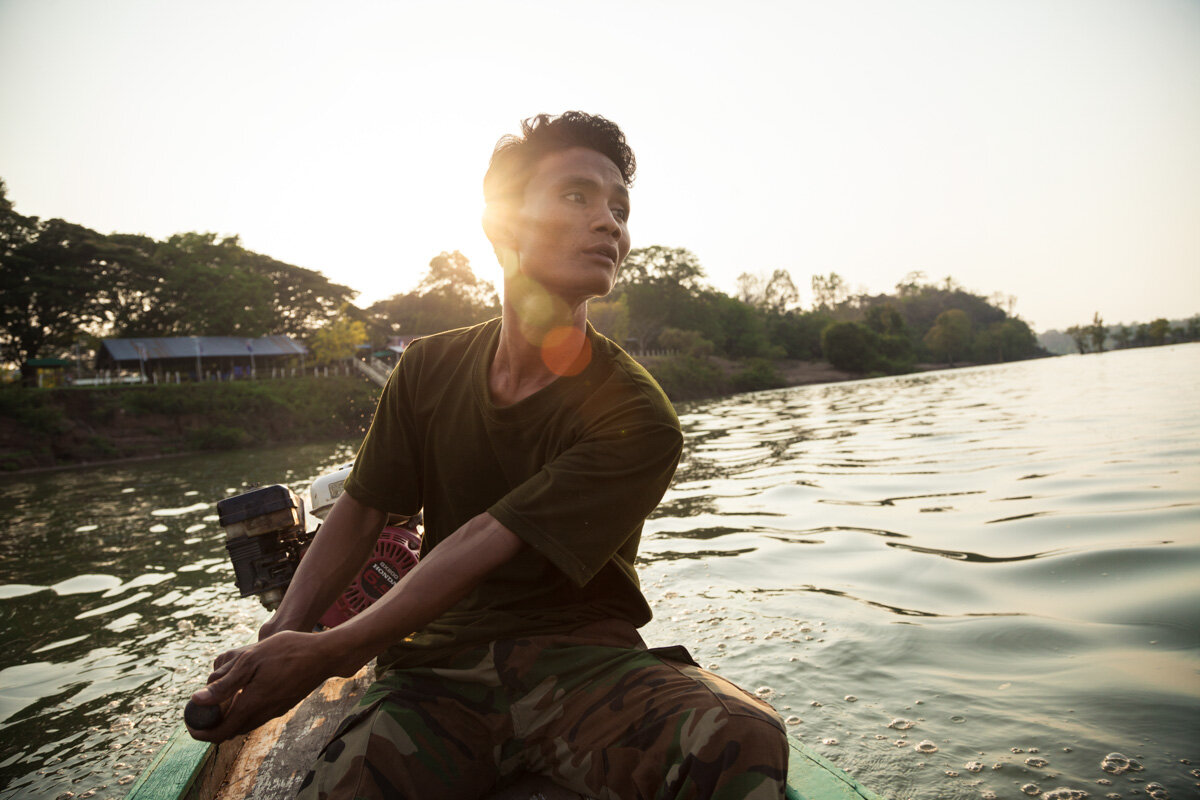
WWF’s conservation work in the greater Mekong
April 8, 2014 - Stung Treng (Cambodia). Mr. Teng Leang works as a river guard and boat driver, and occasionally bring tourists to see the Irrawaddy dolphins. © Thomas Cristofoletti for WWF-UK

February 04, 2014 - Ta Reach Village (Kampot). Ms. Rin Ren (30) recollects water from her dug well. This is her main source for potable water, but it's only available during the wet season . © Thomas Cristofoletti / Ruom for SNV
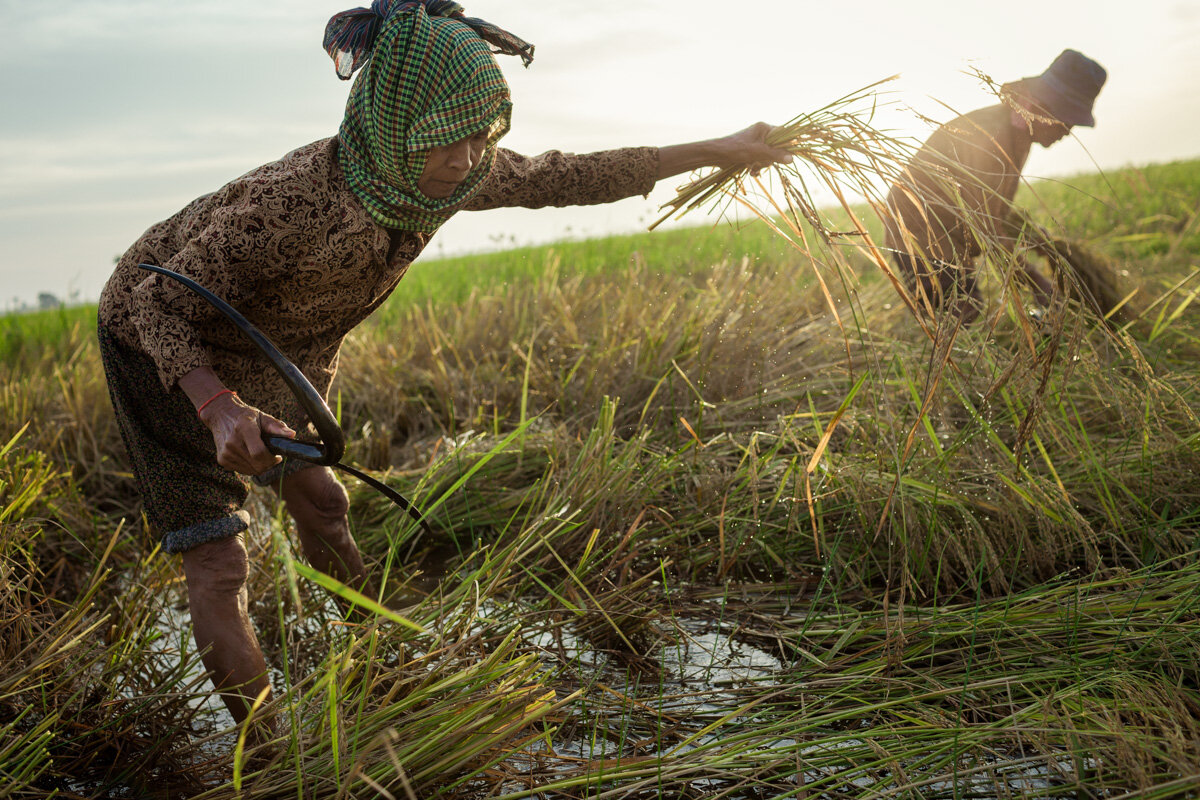
November 30, 2013 - Lvea village, Seang kveang Commune - (Prey Veng). Ms Eam Pom (62) cuts organic rice with a sickle during a crop harvest in paddy field outside the community. © Thomas Cristofoletti / Ruom for UNDP
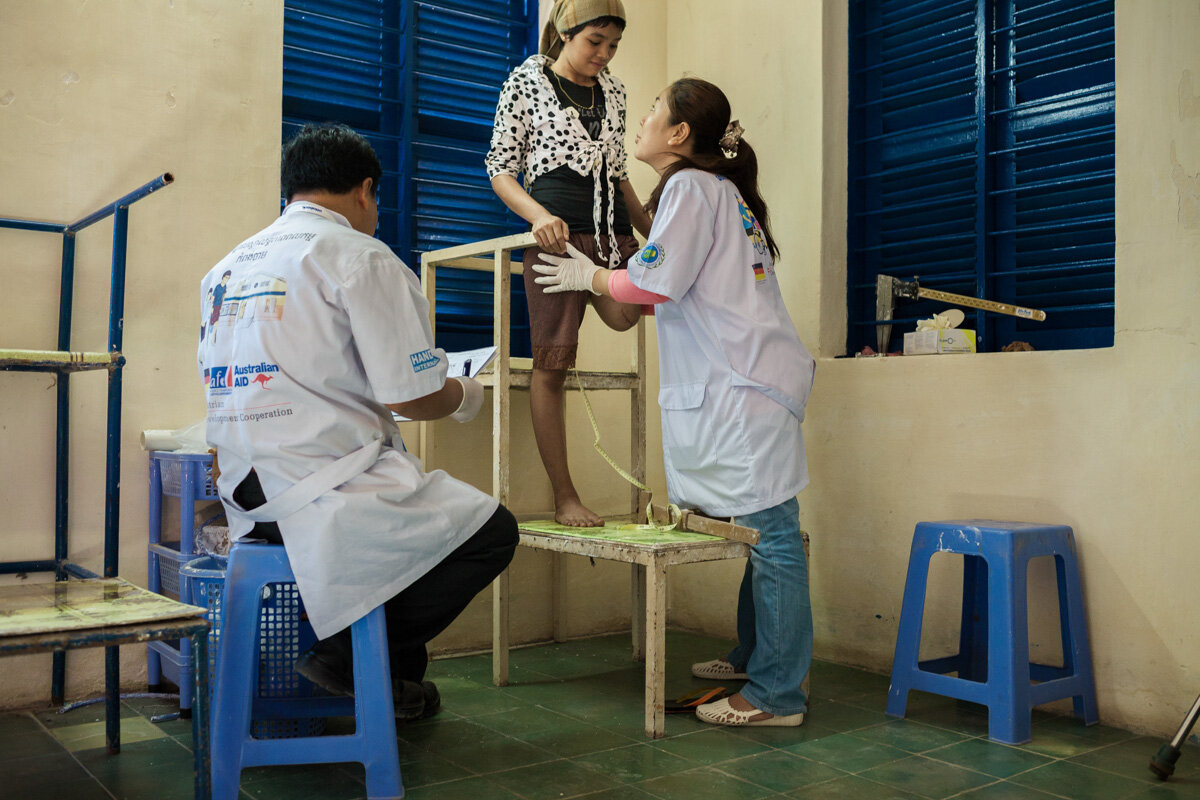
November 29, 2013 - Handicap International Rehabilitation Center (Kampong Cham). Dott. Chai Borany (27) measures a patient's amputation to fit a prostethic leg. She is one of the 70 Cambodians who graduated at the CSPO (The Cambodia School of Prosthetics and Orthotics), a school that provides Prosthetics - Orthotics training for students from low-income countries in Phnom Penh. © Thomas Cristofoletti / Ruom for UNDP

November 28, 2013 - Sterng Chey Commune (Kompong Cham). Mr En Noy (55) rides his bycicle on the way back to his home. He was a soldier during the war and he lost a leg as the conseguence of a bullet. Nowadays he has a small bike repair shop in the village. © Thomas Cristofoletti / Ruom for UNDP
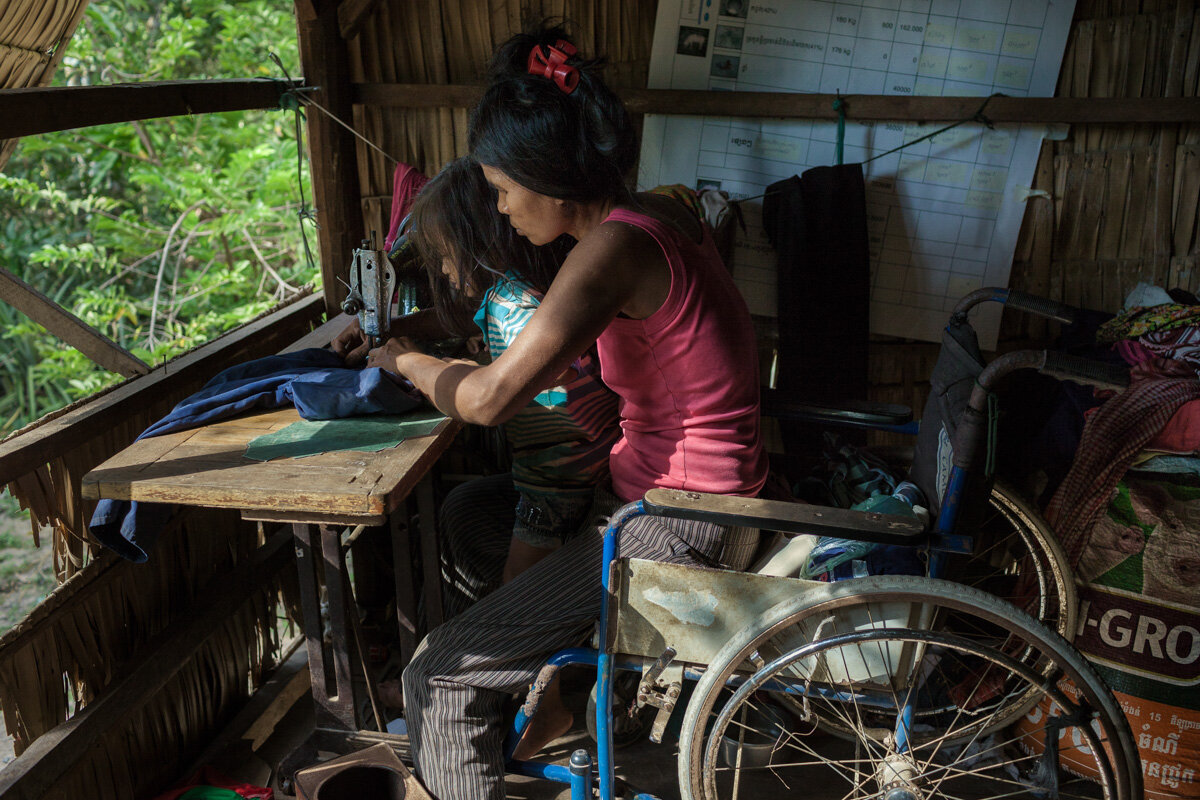
November 28, 2013 - Batheay village (Kompong Cham). Ms. So Yeou (50) received a tranining in sewing and she is now able to make some small incomes with this activity. She lost a leg when she stop on a landmine while she was working at her Bamboo farm. © Thomas Cristofoletti / Ruom for UNDP
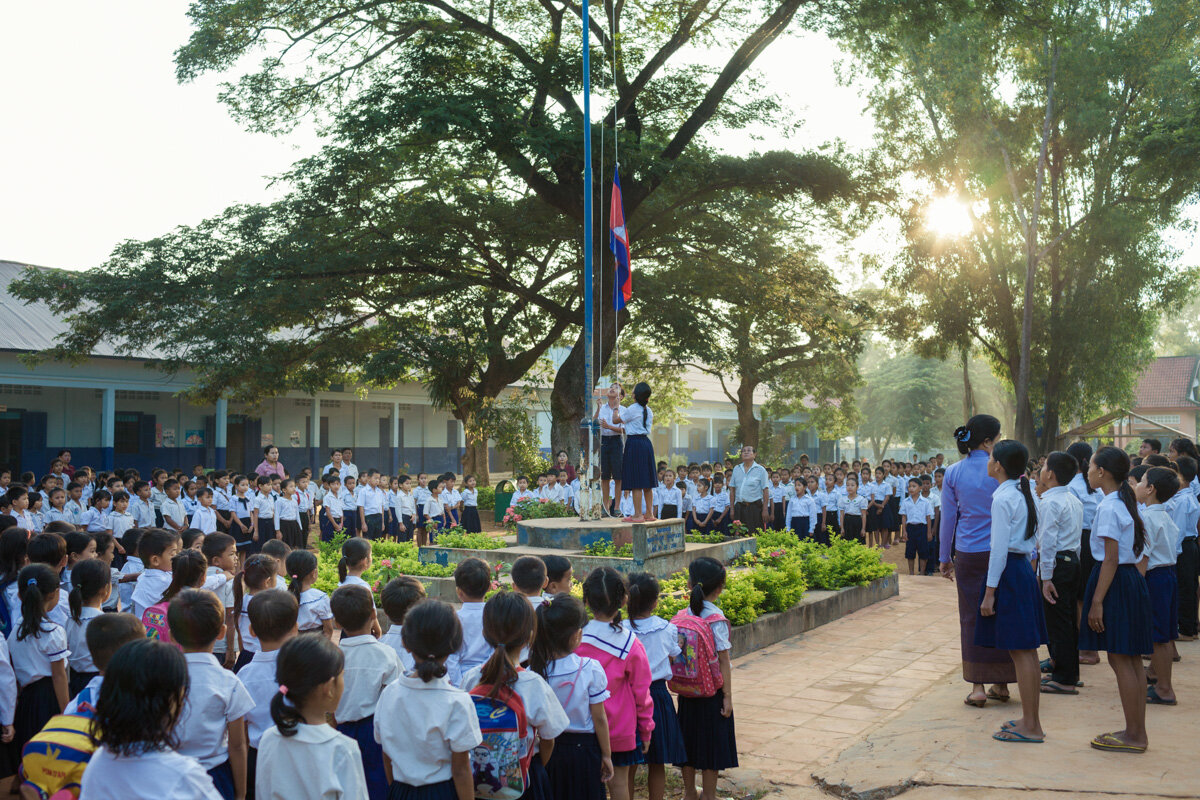
October 30, 2013 – Teabanh Komrou Primary School (Siem Reap). Students line up before the beginning of the morning classes. © Thomas Cristofoletti / UNICEF